Courtesy of the Artist and Taylor Galleries, Dublin.
The Department of Tourism, Culture, Arts, Gaeltacht, Sport and Media has been working with the National Cultural Institutions through the ongoing COVID-19 pandemic to develop meaningful ways to support artists across the country at this challenging time. In October 2020, Minister Catherine Martin committed €1m from her department to Crawford Art Gallery and the Irish Museum of Modern Art (IMMA) to fund the purchase of artworks by artists living and/or working in Ireland. The investment enabled the two institutions charged with collecting contemporary art to work collaboratively to support artists by buying artworks to add to the National Collection.
The National Collection
The National Collection is the art collection of the State, which includes Crawford Art Gallery, IMMA, the National Gallery of Ireland, the Arts Council, and the Office of Public Works, for example. This acquisitions fund is therefore a major investment and vote of confidence in contemporary art, living artists, and the National Collection. As the cultural repositories for the country, the role of the National Cultural Institutions is to reflect Ireland and her people and tell the story of our country.
The Artworks
This is the first time in over a decade that substantial funding has been specifically allocated towards building the National Collection to reflect contemporary culture.The body of 422 artworks by 70 artists from across the country has been selected through a rigorous process by both institutions to ensure strategic and thoughtful acquisitions for the nation. Spanning from 1972 to 2021, the 225 works Crawford Art Gallery has acquired consist of paintings, photographic work, prints, drawings, sculpture, installations, moving image, sound work, film, digital work, embroidery and performance.
The Artists
Below is a list of the 39 artists whose work Crawford Art Gallery has acquired to add to the National Collection. We’ll be profiling each artist on this list on our social media channels and website over the coming weeks and months in our #YourNationalCollection series: stay tuned for updates.
Aideen Barry, Sara Baume, Stephen Brandes, Angela Burchill, Declan Byrne, Elaine Byrne, Tom Climent, Yvonne Condon, Elizabeth Cope, Gary Coyle, Stephen Doyle, Rita Duffy, Amanda Dunsmore, Caoimhín Gaffney, Debbie Godsell,
Michael Hanna, Marie Holohan, Katie Holten, Brianna Hurley, Andrew Kearney, John Keating, Fiona Kelly, Anne Kiely & Mary Palmer, Roseanne Lynch, Brian Maguire, Evgeniya Martirosyan, Danny McCarthy, Rosaleen Moore, Peter Nash, Ailbhe Ní Bhriain, Íde Ní Shúleabháin, Nuala O’Donovan, Sarah O’Flaherty, Tom O’Sullivan, Michael Quane, Jennifer Trouton, Charles Tyrrell, Daphne Wright.
#YourNationalCollection
Press release Art Acquisition Fund (Word Doc)
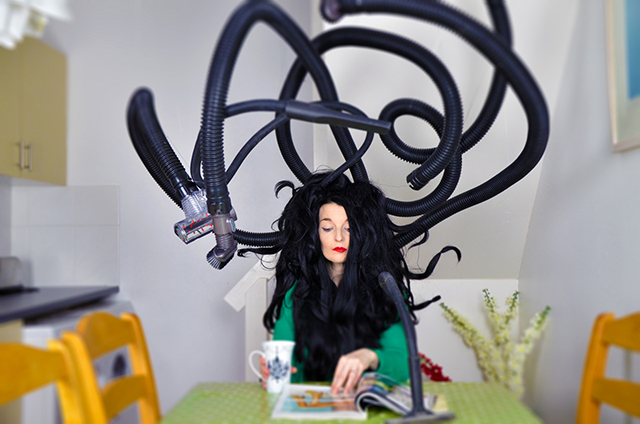
Aideen Barry AHRA is a practising visual artist based in Ireland with international representation. In 2020, she was elected as an Associated Member of the Royal Hibernian Academy. She is also a member of Aosdána and lectures in several universities and schools of visual art.
Originally commissioned by the Arts & Heritage Trust UK, ‘Not to be Known or Named’, the work joining Crawford Art Gallery’s collection, is what Barry calls a ‘performative film and an endurance performance piece’. It is a stop-motion film which shows the artist overwhelmed by the monotony and magnitude of domestic chores in nightmarish scenarios, exploring obsessional behaviour in the context of suburban normality.
‘Having my work acquired by the National Collection at Crawford Art Gallery is a huge moment in my life. Not only is it important for me to have my work in such a prestigious national and international collection but for me personally the Crawford was the first access point for me growing up in a working class community in Cork City. It was the one place I could go freely to access visual culture and that had a profound effect on my personal aspirations, artistic ambitions and development of my lingualism in the visual arts. This is of immense personal importance to me, but also this drive to support artists right now to be included in the collection marks a moment where this turbulent and traumatic time will be viewed as one of the most important civic investments the state has undertaken for visual art and for its citizens. We all benefit from moments like these.’

Watch Barry discuss the background to ‘Not to be Known or Named’, now part of the National Collection at Crawford Art Gallery:

Sara Baume is a West Cork-based artist and writer, who studied fine art at Dun Laoghaire College of Art and Design (IADT). Her writing has appeared in publications including the Irish Times, the Guardian, the Stinging Fly, and Granta Magazine. Her first novel Spill Simmer Falter Wither was published to acclaim in 2015. In March 2020, her first non-fiction book, handiwork, appeared.
‘So sick and tired’ is a textwork that was originally created for Midsummer Moments, a socially-distanced reimagining of the Cork Midsummer Festival. Baume was asked to craft a line of text in response to living in lockdown and had been fascinated by the rapid changes to the language of advertising and daily life that attended the outbreak of Covid-19.
Made in close collaboration with the National Sculpture Factory, it was initially displayed on the building’s red-brick exterior in the summer of 2020 and was Baume’s first piece of public art. Its neon tubing illuminated at sunset on the summer solstice in amber, chosen to reference the uncertainty of that colour within the traffic-light colour system familiar to all road-users.
Baume has described Crawford Art Gallery’s acquisition of this work as ‘the closing of a beautiful circle’, since Crawford Art Gallery is the first art gallery she ever visited as a young child on trips to the city with her mother. Watch her speak about this work and her connection to the gallery here:


Born in Wolverhampton, Stephen Brandes has lived and worked in Cork since 1993. He represented Ireland at the Venice Biennale 2005 as part of ‘Ireland at Venice’, and has shown in numerous exhibitions both in Ireland and internationally, including as part of the absurdist culinary performance group The Domestic Godless. He joins the National Collection with two additions to Crawford Art Gallery: “Todnauberg Puppet Set” and “Chat Show”.
In his own words:
“My practice includes collage, painting, monumental drawings, photography and video. I am not constrained by any particular medium. It is all underpinned by a fondness for European traditions of absurdism and satire and an interest in the emotive areas that exist between comedy and tragedy. Inspiration is drawn from art, design and film history as well as modern European history, literature, philosophy and travel.
Both “Todnauberg Puppet Set” and “Chat Show” were made during the first months of lockdown in 2020. Unable to travel, I subscribed to an alternative movie library and watched a film each night as a substitute. Concurrently, I began painting again with no particular aim, other than to make funny, sad and ambiguous objects, built from misappropriated images and moments pulled from these films.
Inclusion in the National Collection is a validation for attempting to make a positive contribution, albeit in a modest way, to the nation’s cultural history. This is one job of an artist.”
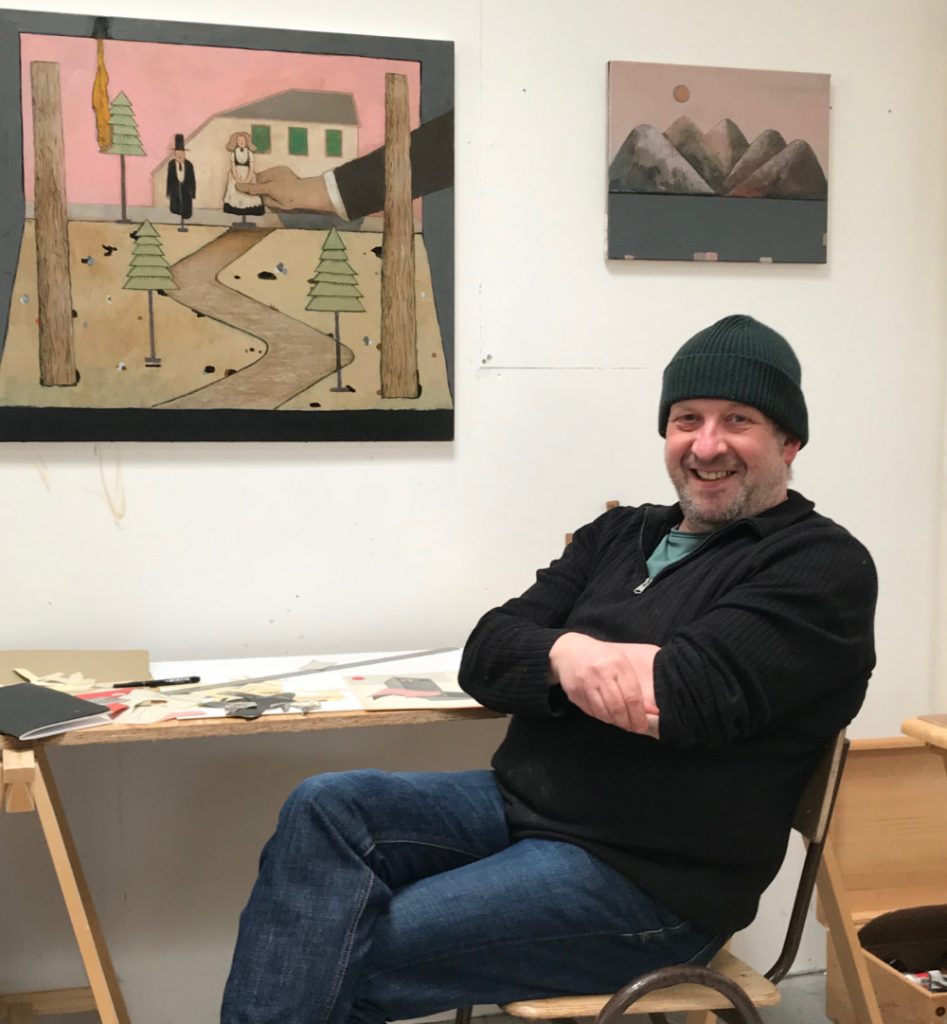
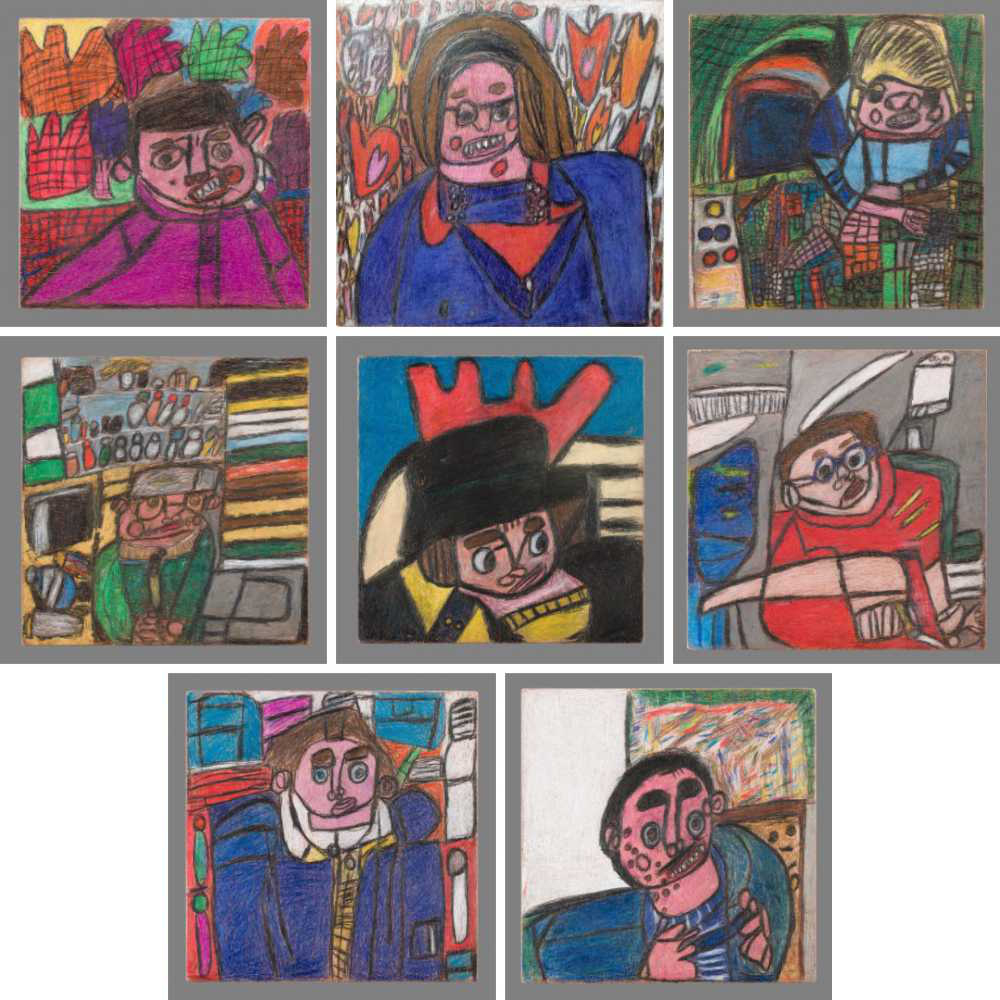
Images: Row 1 (L-R):
Angela Burchill, Marie, pencil & coloured pencil on board, 30 x 30 cm. Courtesy of the Artist.
Angela Burchill, Katie, pencil & coloured pencil on board, 30 x 30 cm. Courtesy of the Artist.
Angela Burchill, Rosaleen, pencil & coloured pencil on board, 30 x 30 cm. Courtesy of the Artist.
Row 2 (L-R):
Angela Burchill, John Whelan, pencil & coloured pencil on board, 30 x 30 cm. Courtesy of the Artist.
Angela Burchill, Íde, pencil & coloured pencil on board, 30 x 30 cm. Courtesy of the Artist.
Angela Burchill, Ailbhe, pencil & coloured pencil on board, 30 x 30 cm. Courtesy of the Artist.
Row 3 (L-R):
Angela Burchill, John K, pencil & coloured pencil on board, 30 x 30 cm. Courtesy of the Artist.
Angela Burchill, Eoin, pencil & coloured pencil on board, 30 x 30 cm. Courtesy of the Artist.
Angela Burchill is from Bandon, Co. Cork. A prolific portrait artist, Angela works primarily with pastel pencils on paper and treated wood. In her own words: 'I like to work on portraits of my people in L'Arche because they are all my friends. It makes me happy to draw them because they are the people l live with, work with and share my life with.'
Her portraits are bold and highly-worked, showing an instinctive approach to pattern. They capture details of her friend's personalities with warmth, from Katie’s love of hearts which surround her, to Rosaleen working on a drawing of a dense cityscape.
Angela worked as an artist in residence at Mayfield Arts Centre for almost a decade as part of the Cúig studio programme and has exhibited her work at Crawford Art Gallery, Wandesford Quay Gallery, Cork, Southbank Centre, London, Gallerie Outsider Art, Amsterdam, Belconnel Arts Centre, Canberra, Paul Bardwell Gallery, Columbia, Galway Arts Centre, The Museum of Everything, London, HAI New York, Flat Iron Gallery, New York and Sirius Arts Centre, Cobh.
“I’m so delighted and happy that the gallery will have my work so that everybody can see my art; and the Crawford took my work to New York and when it’s in the gallery I will be famous.”
Angela is a member of Crawford Supported Studio. You can find out more about Crawford Supported Studio artists here.
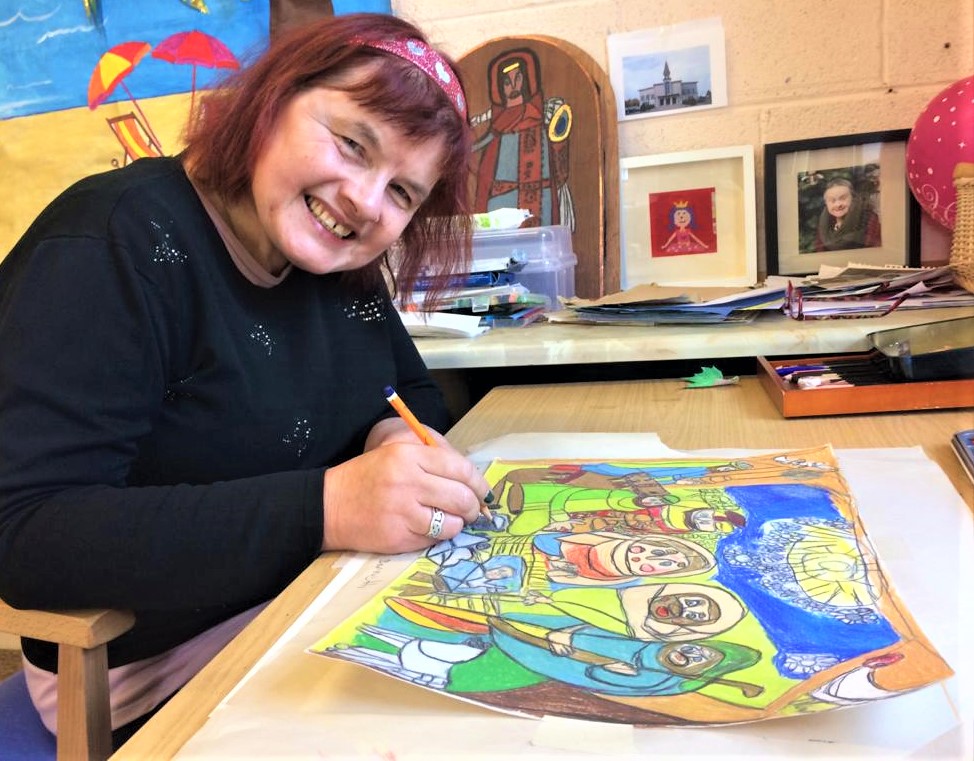
Watch a video message from Angela here:

Declan Byrne has created a remarkable body of work since joining the Studio at KCAT Arts Centre in Callan, Co. Kilkenny in 2004.
A keen observer, Declan generally uses an object, a photograph or a reproduction of an artwork as inspiration for his work. He transforms the world he sees in a very detailed way, building up a drawing or painting from small sections of colours. Slowly, the ground is mapped out by bringing all the parts together in a completely new composition: in his practice he has clearly found a way of communicating.
In recent years he has also been expanding these processes into sculptural work. For his sculptural works, he carefully cuts pieces of dried acrylic paint found in painting pallets with scissors and glues these small pieces of colour to found objects – and this is the method by which Encrusted Dog, now part of the National Collection at Crawford Art Gallery, was made.

Declan has shown his work widely internationally, including in Luxembourg, Finland, Germany, Australia, Switzerland, the Netherlands and the UK. He has also exhibited in Ireland at the Kilkenny Arts Festival, Dublin City Council Offices, Skibbereen Arts Festival and University College Cork. He has been involved in a number of exchanges, including with Project Ability Gallery, Glasgow, collaborating with artist Alastair MacLennan over the last five years as part of the Engagement Project at KCAT.
You can find out more about Declan’s work at KCAT Arts Centre here.

Elaine Byrne is a Dublin-based artist who works multimodally. Her research-based practice examines overlooked histories, historical texts and artworks as a platform to mobilize history as it relates to current political and social concerns. Employing sculpture, video and photography, Byrne focuses on opening new questions for the viewer to highlight present-day urgencies.
'If we winter this one out' is a photograph with text burnt through the image. I use customized branding irons to burn the text on the photograph so even though the image is an edition of three, each edition is unique as the exact conditions of burning the letters on the paper can never be replicated. With ski resorts partly blamed for the speed of the spread of Covid-19, the photograph was taken just before the exodus off the mountain, while the use of typography creates an extra, layered meaning to the Seamus Heaney quote, [one] which we have become all too familiar with since the outbreak of Covid-19.’
‘I am delighted to be part of the National Collection at Crawford Art Gallery as I exhibited at the gallery in 2016 and really appreciate the Crawford’s mix of historical and contemporary programming.’


Based in Cork City, Tom Climent is a painter. His work over the last twenty-five years or so has varied from paintings of figurative, urban and landscape subjects. Referencing landscape, various types of structures and natural phenomena, Climent’s Eden now joins the National Collection at Crawford Art Gallery.
“The way I work is largely intuitive, painting for me starts a process of discovering unintended connections and relationships, of trying to search for reason and meaning in each work that emerges. The first marks and structures create the environment for a process that requires me to constantly re-evaluate what’s important so I can find out what the painting will be. I feel as if I’m in a relationship with the painting, it guides me as much as I control it.
Eden is very much part of the series of paintings I have been working on over the last ten years or so. I feel it is an important piece within this group of paintings. Over my time as an artist, the work I had done has been structured into groups or series of paintings. This current series is very much geometric in nature and has an overall landscape structure to it.
My work generally tends to be suggestive. I feel it absorbs places I’ve been to, experiences I’ve had and ideas and images I come across. My process of painting embraces both logic and reason and also chance and accident. I allow myself to be guided by each individual piece. The work itself exists on the borderline between abstraction and representation but also between real and spirit worlds. It allows for magic to have a role its creation.”


Yvonne Condon is a dynamic artist from East Cork, who is non-verbal and partially sighted. She creates bold, uncompromising images, working at great speed.
Yvonne’s drawing style is determinedly graphic. She paints with acrylic on inexpensive card, using thick black outlines, mixing colour directly on the surface rather than a palette. Her method of production is singular, fearless and intense; she may produce a painting in a matter of just 10 minutes. Yvonne works from observation, working with sitters or collected imagery from books, magazines and photographs.

Yvonne participates in Crawford Supported Studio and is a long-term member of Glasheen Artists Studio Programme (GASP). Most recently Yvonne had a solo exhibition at Gallery of Atypical, Belfast, and her work was selected for exhibition at Flat Iron Gallery, New York. She has previously exhibited at Millennium Hall and the Irish Examiner Office, Cork, Paul Bardwell Gallery of Contemporary Art, Medellín, Colombia, at the Royal Hibernian Academy 185th and 186th Annual Exhibition, Crawford Art Gallery, Sirius Arts Centre, Cobh, Wandesford Quay Gallery, Copper House Gallery, Dublin.
Yvonne was a recipient of an Arts & Disability Ireland New Work Award in 2019, although progress was delayed by Covid-19 restrictions. She is currently developing public artwork with the support of Cork City Council and Princes Street Traders. Yvonne was recently interviewed by Arts & Disability Ireland as part of a ‘meet the artist’ programme. Read the piece here.
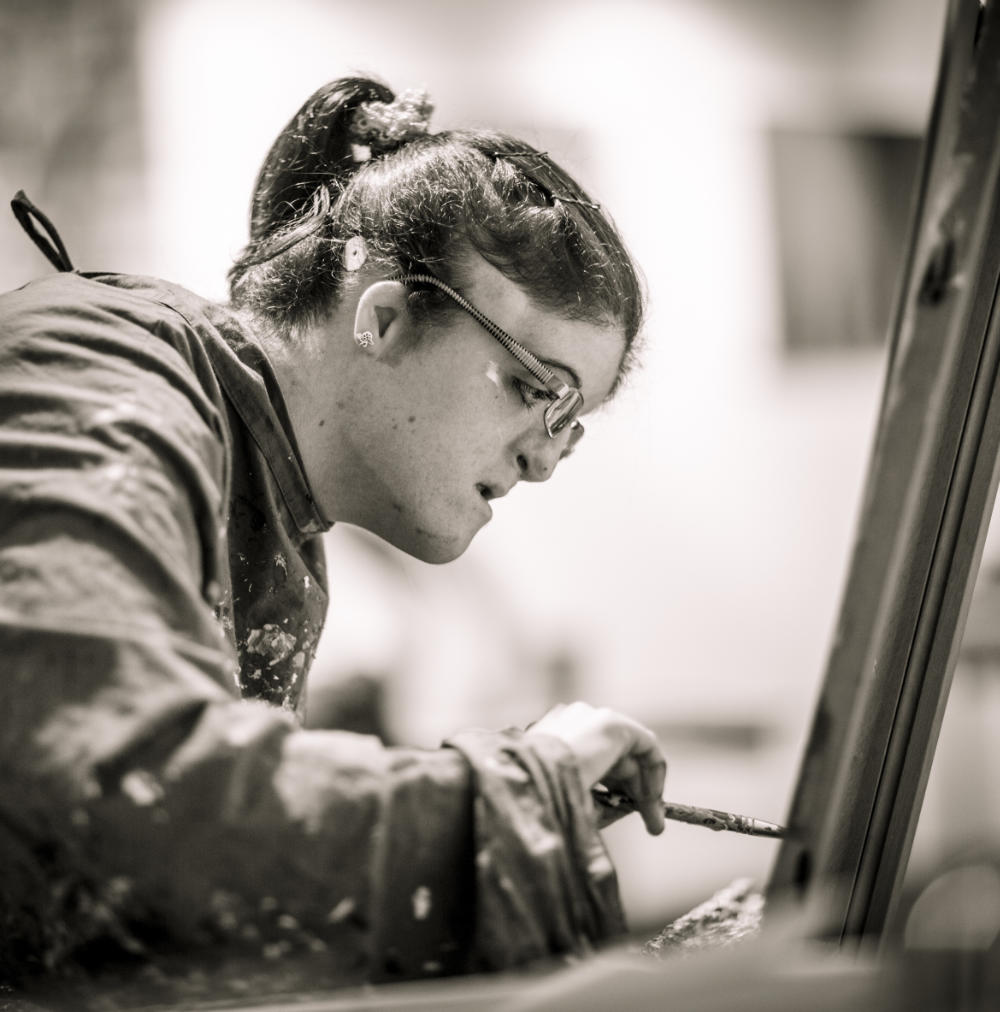
Watch Yvonne at work in the studio:
Video courtesy of Crawford Supported Studio.

Elizabeth Cope has been a painter for fifty years, known for the brilliance of colour that she applies to her canvases. She lives and works in Co. Kilkenny.
“It is the greatest honour for me to be chosen by the Crawford Art Gallery and to be a part of the National Collection.
I have had the impulse to paint since childhood. My inspiration comes from nature and from everyday life. I paint fast, on the hoof, en plein air, and I have a love of colour. But I also paint in the studio, where this work was done.”
About her work ‘Generation Gap’ which is now a part of the National Collection:
“I started this painting when in City and Guilds, London in 2005. The figure in pink reading and writing, absorbed in her own world, is our daughter, Sybil, totally indifferent to the background of lobsters. The skeletons seem to be more aware than she is: they are alive, like us, two spectators, all seeing and totally aware (I had just bought Sybil a new pair of floral boots in Oxford Street).
I finished the painting the following year in my studio at home, adding two cut-out naked figures, actively engaged somewhere between the operating theatre and the bedroom.”
Sandra Gibson was the first critic to take note of Cope’s menopausal paintings when they were exhibited in a group show, in Liverpool in 2008. She writes about it (and many others) in the essay ‘Living in a Gallery’ in Cope’s monograph, Seduced by the smell of paint, which was published in 2017 by Gandon Editions.

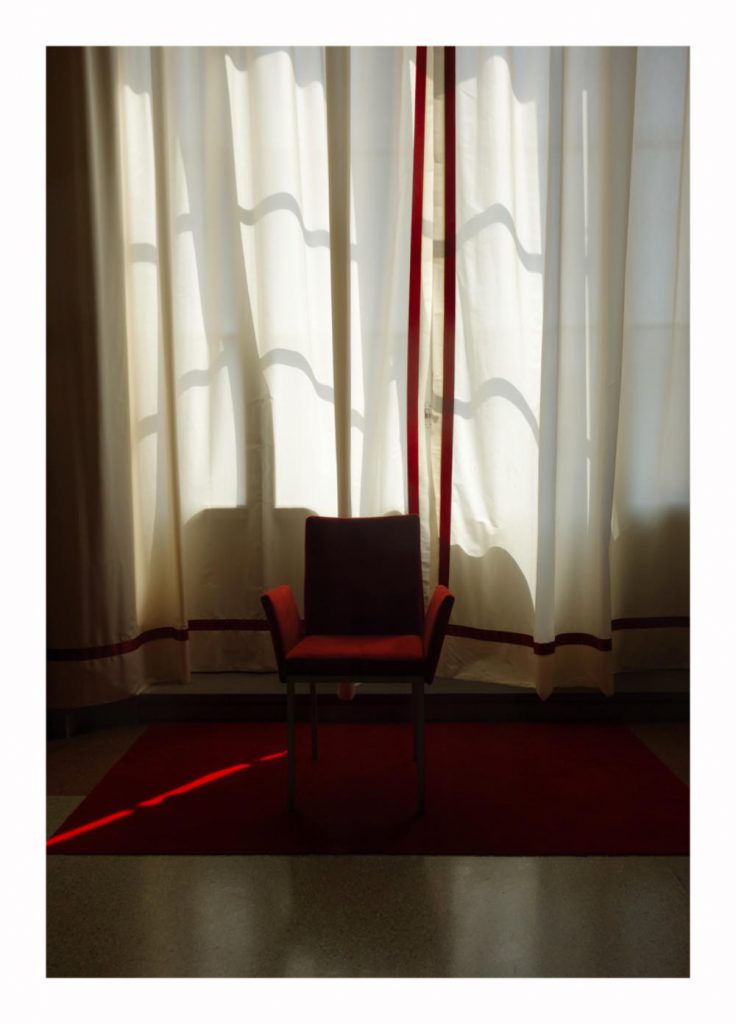
Gary Coyle RHA studied at the National College of Art and Design, Dublin and the Royal College of Art, London. Coyle works in a range of media, including drawing, spoken word and performance and photography.
His work has been exhibited at venues including the Tate London, the Centre Culturel Irlandais, Paris and Akkuh, Henglo. He was elected as a member of the Royal Hibernian Academy in 2007 and Aosdána in 2009. In 2018, My Magnetic North, a one-man spoken word show written and performed by Coyle, premiered at The Project Arts Centre, Dublin. In March 2020, his most recent exhibition, Dreaming Different Dreams, was held in the Caoimhín Kavanagh Gallery, Dublin.

“As someone who is part of the LGBTQIA+ community it is a great honour to know that this piece will go towards documenting our existence and experiences.”
Stephen Doyle is a Cork-based artist and graduate of Crawford College of Art and Design (2017). Doyle’s work references queer identity and queer culture through painting and installation. Doyle was a shortlisted Artist for the Zurich Portrait Prize 2018.
‘Meditating Tongqui’ has now been added to the National Collection, joining Doyle’s Dylan is ainm dom…(2018), for which he was shortlisted for the Zurich Portrait Prize and which was acquired by Crawford Art Gallery in early 2020.
Here, Doyle discusses the genesis of ‘Meditating Tongqui’:
“This piece highlights the millions of ‘Tongqui/Tongfu’, currently living in China. The coined name refers to homosexuals married to opposite sex partners because of an obligation to lineage or simply to avoid suspicion of being homosexual or for any number of personal or political reasons. It questions identity, both cultural and sexual. It renders the sitter submerged in an environment void of connection.
There is a sense of confusion, yet comfortability within this space suggested by the sitter's body language, further validated by the removal of their shoes, indicating they have existed in this space for a considerable amount of time. The vibrant spray-painted information post is ironically stripped of instruction: a commentary on the government's acknowledgement of the issue and their lack of action to aid their queer citizens. This piece highlights those who don't get to live the lives they would rather. Some of us will grow old and ponder what could have been.”


“Art is a spiritual force and after this, the most difficult of years, I am reassured and encouraged by this support. Right now, I feel relieved and very happy to have the financial capability of making practical plans that will keep me inspired and working.”
Belfast-born Rita Duffy gained a BA from the Art & Design Centre and an MA in Fine Art from the University of Ulster. Duffy continues to initiate major collaborative art projects and was made an Honorary Member of Royal Society of Architects for her developmental work in the built environment. In 2004, ‘Thaw’, a contemporary art project with environmental concerns aimed to bring an iceberg to Belfast: history and narrative continue to pulse through her work. In 2018, she was recognised for her contribution to visual arts in Ireland and elected to the Aosdána, Ireland’s elected ‘people of the arts’.
Currently Duffy holds a Visiting Artist Fellowship at Trinity College, Dublin.

Three works by Duffy have joined the National Collection here at Crawford Art Gallery: ‘Troubled Ship’ (2009), ‘Guantanamo, Amas, Amat’ (2017) and ‘The Emperor’s New Clothes’ (2020).

According to Duffy, ‘Troubled Ship’ is “a long drawing that depicts street scenes of the conflict in the North, meticulous, detailed and carefully situated within the nautical architecture of the great ship Titanic. I selected and purchased this ‘Iron Deck’ plan from Harland and Wolf and populated the grid with images from my note books and archive. In this rendition of the Titanic story, the Iceberg is carried deep in the heart of the vessel.”

“‘Guantanamo, Amas, Amat’ depicts the orange jumpsuit I used to wear in the studio: my perception of the garment changed after watching televison images of hooded prisoners in Guantanamo Bay. The title was a result of a conversation with poet Paul Muldoon and reminds us that human rights violations threaten us all.”
‘The Emperor’s New Clothes’ (see above) is a series of ten drawings made in response to television coverage of the Trump presidency in the USA. “I return regularly to Goya's War etchings, Hieronymus Bosch and Breughel, their compositions pull me into the detailed depictions of humanity. I watch Trumps daily briefings in disbelief – a reoccurring horror show in which all the neuroses that haunt American subconscious dance naked on live TV.”

Amanda Dunsmore is a visual artist whose art practice employs art processes that explores representations of societal transformation through portraiture. She works with video, sound, photography and installation.
Dunsmore’s filmed portraits feature social actors who have transformed society, often filming them in locations of social-historic significance. Her portraits evolve through long periods of research and the work is presented as a series of extensive socio-political/historical art projects. Central to Dunsmore’s art practice is an exploration of potential future memory in society, the accumulative legacy of portraiture in archiving history and the long-term value of socio-political art making.
The Irish LGBTQ+ activist Senator David Norris’ portrait ‘David’ (2012), was filmed as part of an older LGBTQ+ generation, year-long art project and produced for an art commission for Galway County and City Council – which also led to the art project Becoming Christine.
Senator Norris is a leading campaigner for gay rights, a humanist, a conservationist and academic. He is a renowned Joycean scholar and known as an animated and brilliant raconteur. Filmed in the attic of the James Joyce Centre, Dublin, the portrait is 20 minutes in length and silent. In this artwork Senator Norris sits composed, surrounded by books and the remnants of Joyce-related activities.
Speaking at the launch of #YourNationalCollection, Dunsmore said:
“I'm so very proud to be involved with the Crawford Art Gallery and this National Collection. It's very important to purchase artworks that have already been made. The artwork ‘David’ is of an individual who imparted a significant shift upon society for the better and my film portraits are reflective of these individuals.”


Watch Amanda Dunsmore speak about being part of #YourNationalCollection at Crawford Art Gallery at its official online launch in April 2021:
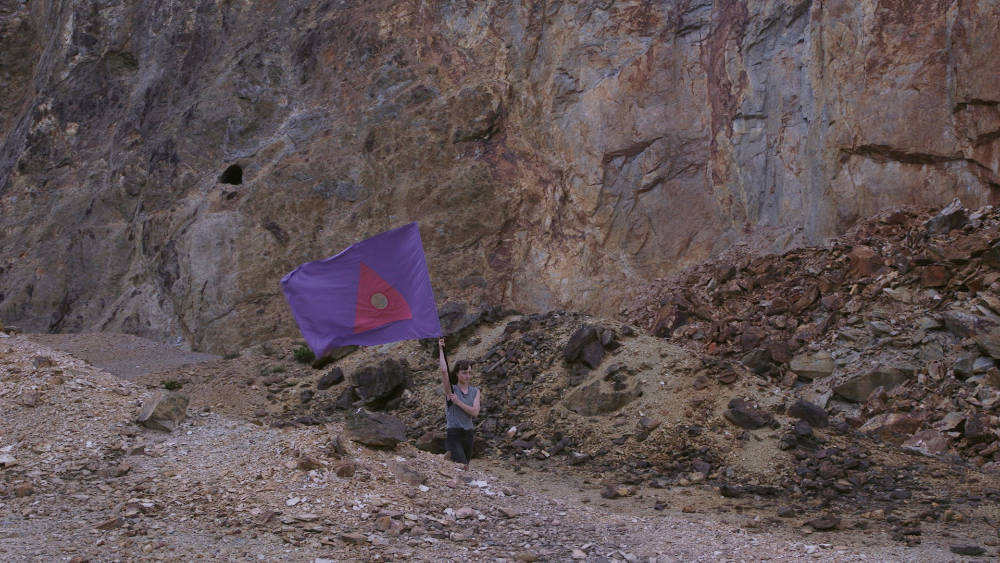
Image: Caoimhin Gaffney, still from ‘Expulsion’, 2012, single channel video, 30 mins. Courtesy of the Artist.
Caoimhín Gaffney is an artist-filmmaker from Dublin.
Crawford Art Gallery audiences may be familiar with his work from his solo exhibition which was held at the gallery from 11 September 2020 to 31 January 2021, entitled ‘Expulsion’, whose namesake film is now part of the National Collection with us.
Partially shot on location in the gallery, the film ‘Expulsion’ imagines a Queer State, an anti-capitalist society whose citizens strive to live in harmony with the environment:
“Having the Crawford as a location to shoot the film in really influenced the script as it developed, and I imagined the Queer State’s ‘seat of power’ being located in the Crawford.
Filming in the Sculpture Galleries and the Library were highlights for myself and the cast and I’m delighted that this new work is part of the National Collection so soon after it was made. After working for so long on it, I’m excited that it will continue to reach new audiences.”

Photo: Caoimhín Gaffney on set. Courtesy of the Artist
Gaffney graduated from the Royal College of Art in London in 2011 with an MA Photography and Moving Image, and was awarded the first Sky Academy Arts Scholarship for an Irish artist in 2015. His work is part of the Irish Museum of Modern Art’s collection and a monograph of his work, Unseen By My Open Eyes, was published in 2017. ‘Expulsion’ was created as the practical component of Caoimhín’s PhD research project, ‘Resisting Homonormativity in Queer Filmmaking Practice’, in the cinematic arts department at Ulster University.
Visit our exhibition archive for further information on Gaffney’s work, including text, audio and video materials created to support ‘Expulsion’ during its exhibition run in 2020 and early 2021.

Image: Caoimhíin Gaffney, still from ‘Expulsion’, 2012, single channel video, 30 mins. Courtesy of the Artist.

My main goal was to create a work that wasn’t going to use any new materials. As an artist, I was conscious of our overuse of materials and I was really aware that we’re putting stuff out in the world that we don't always need to.
‘Stack’ by Cork-based printmaker Debbie Godsell reflects the complex transitioning from traditional rural Ireland to a country that belongs in a contemporary global world. Repurposed artist prints are fashioned in the iconic style of Bord na Móna peat briquettes. The stack is balanced precariously on a school chair. Ancient turbary rights and traditions, plus a highly charged post-colonial relationship with the land, sit uncomfortably in the face of environmental concerns and the search for ecological solutions.
“I like the fact that you can’t see the prints but there is quite a lot of imagery compressed into each briquette. That’s really like the bog itself, because it takes a thousand years to grow a metre of turf. When you think of all that history and memory and the stories that are going on beneath our feet.”
Debbie Godsell graduated with a Masters in Fine Art Research in 2002 from Crawford College of Art and Design. Since then Debbie has been working full-time as an artist and art educator, specialising in printmaking. Her work is widely collected in Ireland and has been acquired by the Office of Public Works, the National Gallery of Ireland, Crawford Art Gallery, University College Cork, University College Dublin, Cork Opera House and the Port of Cork, to name a few. She was a recipient of the Cork County Arts Office Ballinglen Arts Foundation Residency 2019 and the Tyrone Guthrie Bursary Award 2017. Debbie curated and exhibited in ‘Visions of half light’, Macroom Town Hall Gallery, funded by Cork County Arts Office in July 2018. Recent exhibitions include 'Time and the other', Doswell Gallery (2019) ‘Site’, Doswell Gallery (2018), ‘The infinite Whatever’ at the Garter Lane Arts Centre and Cork Printmakers Gallery (2017). She has previously been a recipient of an Arts Council travel award and a Cork City Council Visual Arts bursary. Debbie is a member of Cork Printmakers and Visual Arts Ireland. Debbie was a shortlisted Artist for the Zurich Portrait Prize 2018 at the National Gallery of Ireland.

Watch Debbie Godsell talk about her work joining the National Collection at Crawford Art Gallery in this video filmed at her studio:

“It is very exciting and a real honour to have this work be part of the National Collection.”
Michael Hanna is an artist based in Belfast who uses affective experience to explore areas of connection between psychology, physicality and society. His work seeks to generate new experiences within familiar states by unsettling the semantic relationships between the verbal and the visual, the perceptual and the conceptual, and invoking an awareness of processes that operate below the level of consciousness. He works in a wide range of forms including text-based sculpture, video and immersive environments with site-specific and responsive installation.
“In April last year, the MAC in Belfast commissioned me to make a piece of work to be shown online. I was keen to do something durational that responded to the feeling I was having of losing track of days during that initial period of lockdown.”
Over the course of seven weeks during the first lockdown in 2020, the interior of artist Michael Hanna’s home was lit entirely with a different colour each week, moving through the colour spectrum from red to violet, with each week providing a new sensory living environment within the same space.
“Over the next few months, I developed the work 'A Living Colour Index', based around how novel experiences play a part in memory foundation and set the parameters for our experience of time.”
‘A Living Colour Index’ became a 49-day online project by Hanna with the MAC Belfast, with an interior image or video posted on Instagram accompanied by a quotation related to memory, colour, space, perception and time using the cultural hub’s Instagram account.


Marie Holohan is painter and a founding member of the Arts Ability Studio Group at CUMAS, New Ross, Co. Wexford.
Marie’s work features surreal patterns and vibrant colours to create vivid, detailed paintings which build highly imaginative and dreamlike landscapes. The starting point for these paintings is usually a photographic image, but this is quickly discarded and her natural creativity leads her to depict vivid landscapes and strange new realities.
Using acrylic on canvas, Marie’s primary concern is colour which she applies in controlled, linear patterns that lead the eye through the painting, tracing the dimensions of her created worlds. Marie fearlessly directs these colours, and although her application is controlled and precise, the work remains incredibly free and unforced, which serves to highlight her paint handling skills.
Here at Crawford Art Gallery, four works of Marie’s join the National Collection, each depicting a place of significance: Áras an Uachtaráin, the official residence of the President of Ireland; The Tyrone Guthrie Centre, Annaghmakerrig, a residential workplace and residency programme in Co.Monaghan for artists; Kilkenny Castle, originally built soon after the Norman conquest of Ireland in the twelfth century and now open to visitors; and Johnstown Castle, a twelth-century castle rebuilt in the Gothic Revival style in the nineteenth century.

Marie has exhibited locally, nationally and internationally significant exhibition are ‘One woman‘, a solo show at the Wexford Arts Centre in 2016. ‘Beyond’ a national exhibition curated by Brent Pope and Perceptions 2016 here at Crawford Gallery. She has work in private and public collection such as Loftis Hall and the Wexford County Council Art Collection. She currently has work on show in the Wexford Community Development offices in New Ross and was selected to be part of Pathway 6 Grangegorman Public Art in the new Primary Care Centre Grangegorman, Dublin.
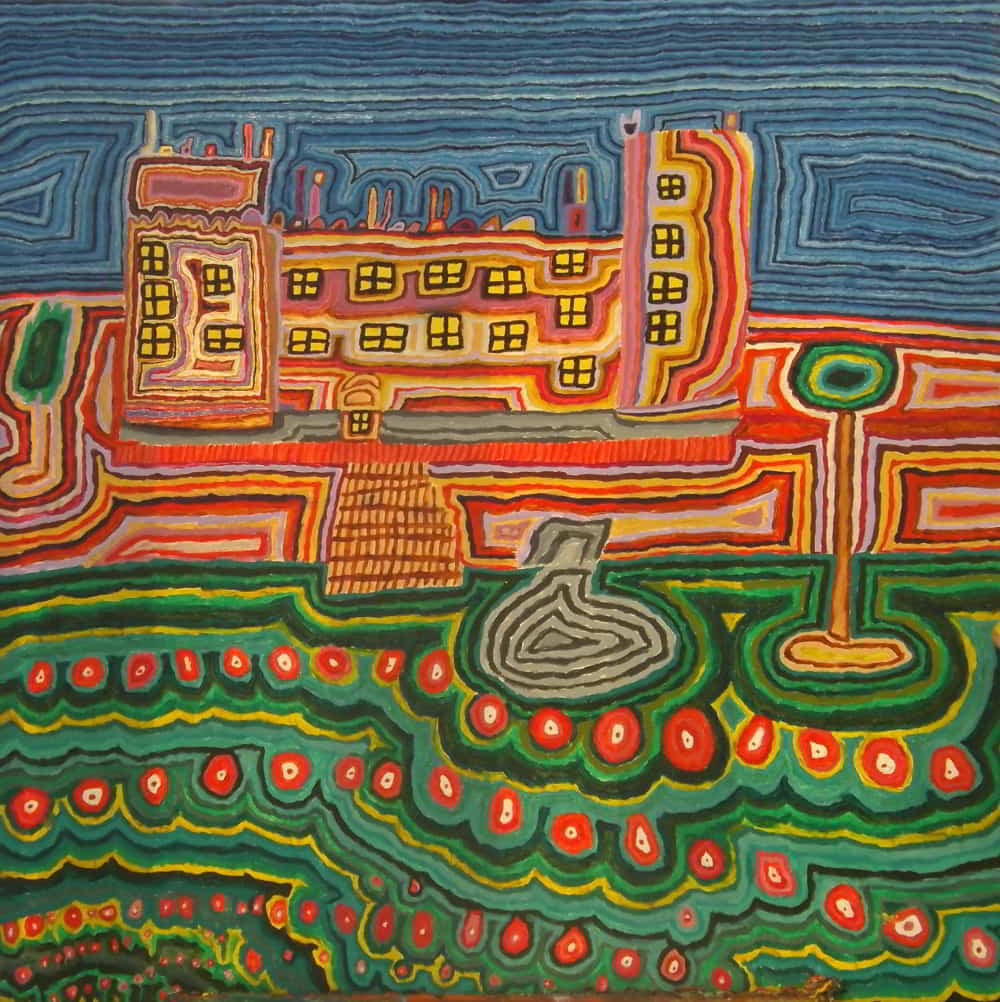



Katie Holten combines ancient Ogham script with the writing conventions of Irish and English in her ‘Irish Tree Alphabet’, now included in the National Collection at Crawford Art Gallery.
The ‘Irish Tree Alphabet’ was commissioned by VISUAL Carlow for Holten’s solo exhibition there last year, in Holten’s words, “the year that we lost to Covid-19”.
The ‘Irish Tree Alphabet’ had been fifteen years in the making, in many ways representing the culmination of work that Holten started in 2004 with with the support of a Fulbright scholarship in New York City, where the artist began researching our relationship with Nature in the City. The artist has made drawings of trees, existing natives as well as non-native trees that now call Ireland home due to the changing climate. Each tree replaces a letter in the Latin alphabet; A = Ailm (Scots Pine), B = Beith (Birch), C = Coll (Hazel), etc. The result is a new Irish Tree Alphabet and a typeface called Irish Trees.
“We are in a Climate Emergency,” says Holten. “I hope that this work, the ‘Irish Tree Alphabet’, can help share a positive message, create a sense of urgency, and invite people to come together to take action. It’s also fun! It’s a drawing, a living work. I hope that one day we can plant people’s messages with trees: Reforest Ireland? Maybe, I hope!”
Deeply committed to social issues, especially as they pertain to environmental concerns, Holten makes drawings, sculptures, installations, books, public artworks and ephemeral actions. She often works on site to explore the history, ecology, and other invisible aspects of an environment. At the root of her practice is a fascination with the contingency of organic and man-made systems and the inextricable relationship between humans and the natural world.
“I feel it’s my duty as an artist, as a human being, to create work that speaks to this moment. We’re living in the Anthropocene, a new geological era that we Humans have created. We have affected every biological system on the planet and I feel compelled to make work that speaks to the urgency of the times that we’re living in. I feel it’s my duty to create work, like the Irish Tree Alphabet, that speaks to our relationship with the planet and other species.”
Download the ‘Irish Trees’ typeface for free here:
Read and listen to Holten speaking about the ‘Irish Tree Alphabet’ here.
Holten’s solo museum exhibitions include VISUAL, Ireland (2020); the New Orleans Museum of Art (2012); Dublin City Gallery The Hugh Lane, (2010); The Bronx Museum, New York (2009); Nevada Museum of Art, Reno (2008) and Contemporary Art Museum St. Louis (2007). In 2003, Holten represented Ireland at the 50th Venice Biennale. In 2004 she went to NYC as a Fulbright Scholar with Cornell University to research our relationship with ‘Nature’ in Cities.



Brianna Hurley is an Irish artist, originally from Bucharest, Romania and now based in Co. Kilkenny.
Brianna initially participated in a number of courses at KCAT, a multi-disciplinary arts and educational centre in Callan, Co. Kilkenny. After her initial training, she became a full-time member of KCAT’s professional artist studio, where she continues to develop her love of painting and drawing.

Brianna takes inspiration from her travels in Spain, architecture, and her love of playing basketball. In recent times, Brianna has been creating a world of her own through her painting practice, for example, by developing the planet of Castalia (named after Castalia Hall in Ballytobin, Co. Kilkenny), painting by painting. The imagined and dramatic landscape of this world features in many recent painting. Further motifs in her paintings include cityscapes, basketball matches and tornados.


Andrew Kearney is a visual artist from Limerick. In 2019, he held a solo exhibition at the gallery, ‘Mechanism’, which comprised of electronic, industrial and theatrical elements which responded, listened and reacted to the everyday life of Crawford Art Gallery and its city centre surroundings.
His work ‘Farther to the East’ was included in this exhibition and has now joined the National Collection with us. Here’s what Kearney had to say about how the work came into being:
“[‘Farther to the East’] had its origins in a road journey from Berlin to Auschwitz-Birkenau during the summer of 2002. As I travelled eastwards, maps were followed and objects and places photographed, each eventually becoming an entry in a filmic diary. Two years later while resident at the Banff Centre for the Arts, Alberta, Canada, I returned to the diary.
“Gradually, the found objects of that earlier journey led to an assortment of flat, plaster-cast rings, sediment like, placed in varying combinations, one on top of the other, forming a series of moulds. Each mould was then filled with black, stoneware slip forming a fragile-skin before being fired, a family of urns emerged. When placed in line the urns supported and augmented each other, their insistent repetition evoking long-silenced voices.”
“In the stillness of the gallery, the dense materiality of Farther to the East asserts something incontrovertible, beyond speech. Perched high above and bathed in a notional pool of ever-changing fluorescent pink light, the work inverts the usual role of the audience below. The empty pool exudes a particular potency, an almost threatening aura of pleasure abandoned, denied, forbidden. The viewer is remote, struggling, submerged. The ready-made ladder – just beyond reach – a truncated signifier of an unattainable sensuality.”
“If the sun-drenched pools of popular culture – from Wilder’s Sunset Boulevard to Hockney’s The Bigger Splash - conjure a life of hedonism, they might also suggest a more transgressive resistant current, a critique of normative values. As with much of my art, the empty pool forces a reconsideration of an environment as it changes, taking us from an unknowable future back into a scarring past.”

Andrew Kearney is based in Limerick and London. Recent exhibitions include Mechanism, Centre Culturel Irlandais, Paris and The Dock, Carrick On Shannon (2017); On Arriving, Watts Artist Village and Gallery, Surrey (2016); Tell Me Something Limerick City of Culture (2014) and SKYLUM, Justice Lipsius Council, Brussels and Nuit Blanche, Toronto (2012/13) and Embrace the Place, TATE Britain (2011).

John Keating is a Cork-based artist who works to create pieces using dry point etching, ink, water colour paints, charcoal, coffee and juice. Three ink-on-paper works by John are now part of the National Collection: ‘Girl on Dog’, ‘Girl in Shopping Trolley’ and ‘Shopping Trolley’.
These works demonstrate John’s keen technical skill and wry sense of humour, deftly transforming his ‘everyday’ subjects – the all-too-familiar shopping trolley, an encounter with a friendly dog – with his commitment to the quality of his drawn line.

John is a member of Crawford Supported Studio. Through a recent Arts and Disability Connect Award, John has been developing new processes along with fellow Supported Studio members Íde Ni Shúilleabháin and Ailbhe Barrett in collaboration with Cork Printmakers.

John’s previous projects and exhibitions have included showing work at Paul Barwell Gallery of Contemporary Art, Medellín, Colombia, Crawford Art Gallery, Cork City Hall, Cork Public Museum in Fitzgerald’s Park, Cork Coffee Roasters, Millennium Hall, Cork, Quay Co-op, Cork, MTU Crawford College of Art and Design, Sirius Arts Centre, Cobh, The Vision Centre, Cork, and The Irish Examiner (Newspaper) office, Cork.

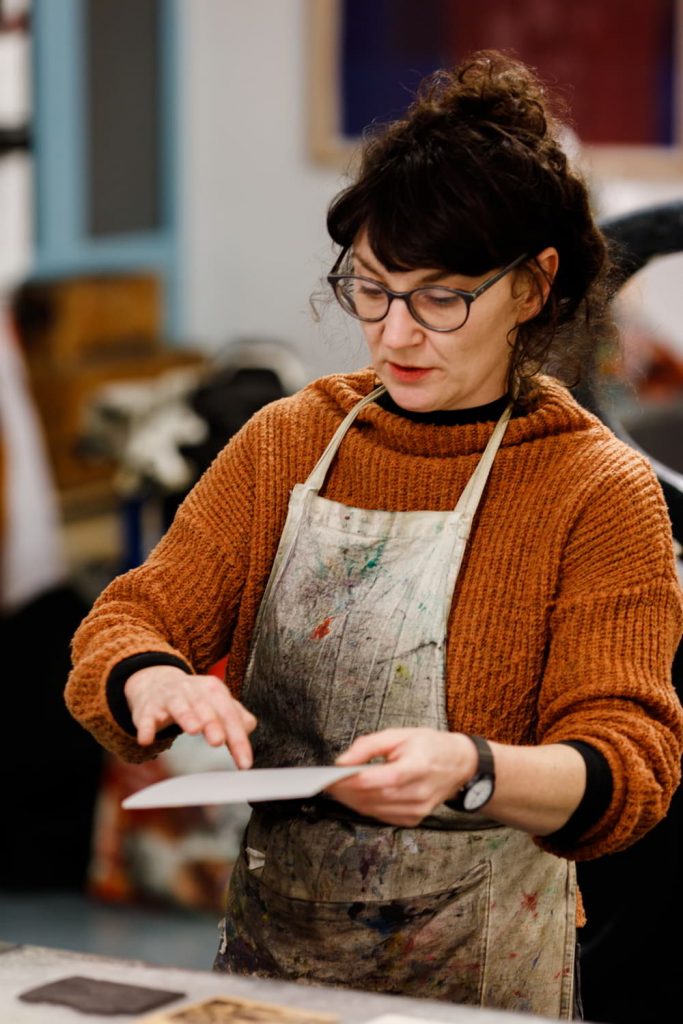
Fiona Kelly, a visual artist and Westmeath native, is based in Cork.
Kelly makes sculptural objects and printed matter from a foraged, ever-expanding archive of waste.
“This archive holds a compendium of debris which I alter and arrange to narrate the rapid unmaking of land by humanistic interruptions.”
‘Homing’ (2019) consists of three wooden pieces, each taking the archetypal form of a house, onto which Kelly screen-printed depictions of landscapes – wild grasses, debris and the ocean – with bitumen, a material commonly used in construction. As Kelly says, ‘to be home is to be on familiar ground, or homing, to return by instinct to its territory after an absence’.
Kelly has had a long-running connection to Crawford Art Gallery:
“When I first arrived in Cork City, the Crawford Art Gallery immediately became a haven to me, it’s a space in which one can really disappear within, to another mindset, another realm, a public space which seems oddly private. My first visit was to “The Sleep of Reason” exhibit (2007) an amazing show that I remember so fondly. I set myself an objective to exhibit within these walls. Now my work has gone a step further: it shall live within these walls. I’m delighted and feel truly honoured to be part of the National Connection.”

Kelly is an artist member of Cork Printmakers’ studio. Her work has been widely exhibited, with some of her most recent shows including Land of Some Other Order, Lavit Gallery; Overburden, Triskel Arts Centre; The Mouth of a Shark, Edinburgh Printmakers Gallery, UK; Field Study, The Auxiliary, UK; The Dirt that Measures All Our Time, Mermaid Arts Centre.
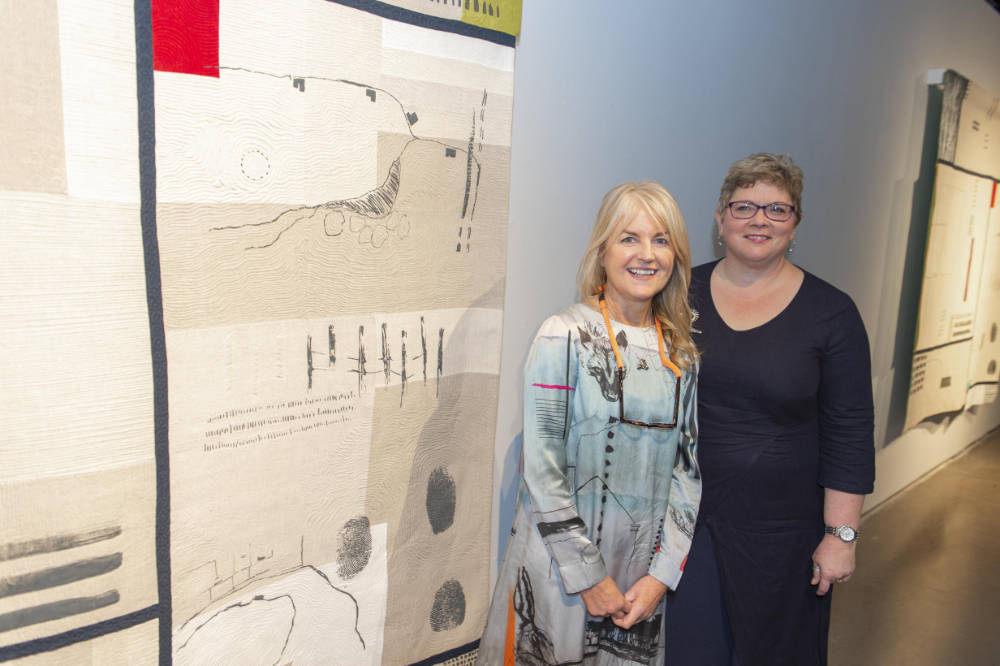
Made specifically for the Crawford Art Gallery exhibition Earth, Wind & Fire (2019), ‘Who Will Tell the Bees?’ – now a part of the National Collection – can be seen as a continuation of the history of textiles within the Cork School of Art context. The artists have a significant local, national and international profile and have worked together, as well as their individual practices, for nearly 15 years. The work addresses environmental concerns, ecology and landscape within wider themes of the histories of women’s traditional and contemporary work.
Anne Kiely is a textile artist based in Cork, Ireland. She creates pieces for exhibitions and works as an artist facilitator for community and education projects. Anne trained and worked in fashion which led her to screen-printing bespoke fabrics: Anne digitally combines her hand screen printed images, etchings, and manipulated photographic images to produce layered designs that echo characteristics of the handmade. Products include fabrics, wallpaper and light shades.
Mary Palmer formed Marimu Designs in 2006 as a spin-off from a successful textile arts supply business. Mary has been involved in the quilting scene in Cork for over 25 years and has exhibited traditional and modern works both at home and abroad She has served on numerous committees and held offices within the Irish Patchwork Society, and is a founder of the cross border initiative, Quilters Guild of Ireland, as well as the contemporary textile art group Cork Textiles Network. In 2009, Mary was certified as a quilt judge through the Quilters Guild of the British Isles. Mary currently serves on the boards of The Design and Crafts Council of Ireland and Cork Craft and Design.
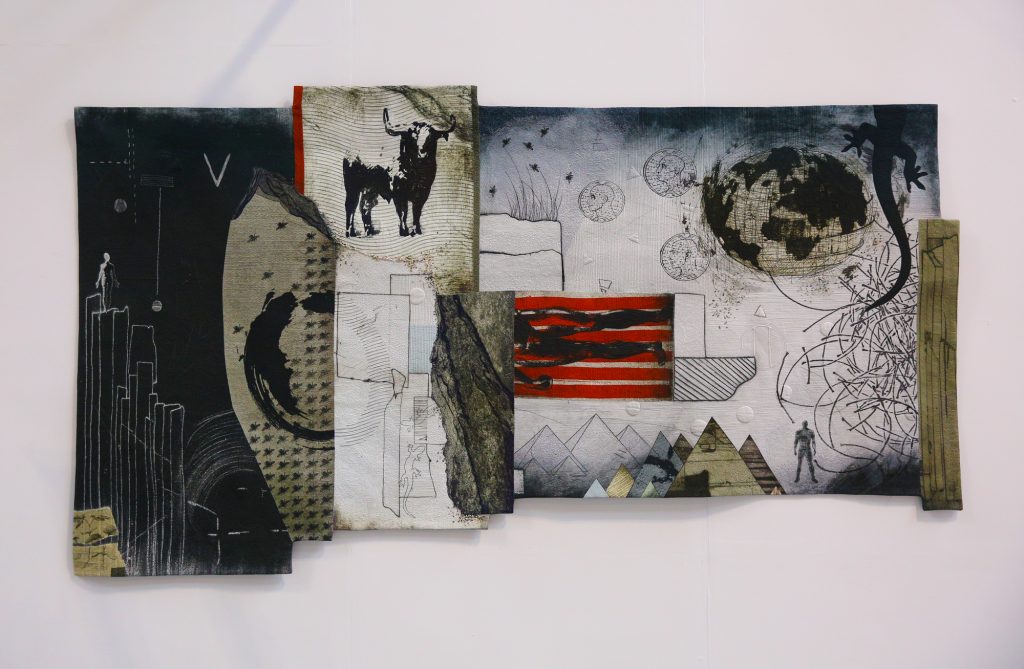
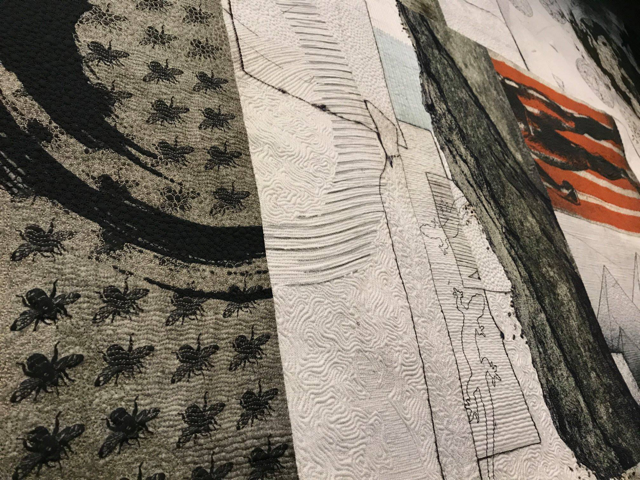
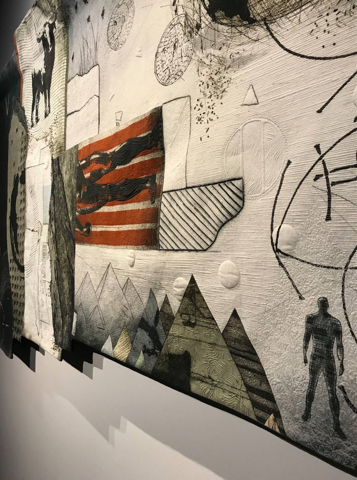


“To be recognized and supported by this purchase means future projects are more
likely to get support. The boost to moral at this time of uncertainty is invaluable.”
Roseanne Lynch is a Cork-based visual artist with an international photography practice looking at modernist architecture and the medium of photography itself. A number of her works have now joined the National Collection here at Crawford Art Gallery.
A residency at The Bauhaus Foundation, Dessau in 2018, prompted Lynch to move to Leipzig temporarily to make this work. Over 18 months her concentration turned from the buildings and Building Materials Archive to the teachings of the Johannes Itten preliminary course undertaken by students at the Bauhaus school of design, architecture and applied arts. She brought her darkroom-based practice to these principles of experimentation and learning the grammar of your materials.
The work was made with the support of the Arts Council of Ireland, Centre Culturel Irlandais, Paris and The Bauhaus Foundation, Dessau.
![Image: Roseanne Lynch, Untitled [Bauhaus Building Research Archive, Broken glass globe /68], silver gelatin fibre based paper by artist. Courtesy of the Artist.](https://crawfordartgallery.ie/wp-content/uploads/Roseanne-Lynch-Untitled-Bauhaus-Building-Research-Archive-Broken-glass-globe-_68-2019-20x24-2-817x1024.jpg)
![Image: Roseanne Lynch, Untitled [Bauhaus Building Research Archive, The Kandinsky's Bath/62], silver gelatin fibre based paper by artist. Courtesy of the Artist.](https://crawfordartgallery.ie/wp-content/uploads/Screenshot-2020-11-12-at-19.59.37-796x1024.jpg)
![Image: Roseanne Lynch, Untitled [Bauhaus Building Research Archive, 96/6], silver gelatin fibre based paper by artist. Courtesy of the Artist.](https://crawfordartgallery.ie/wp-content/uploads/Screenshot-2020-11-12-at-20.02.17.jpg)
![Image: Roseanne Lynch, Untitled [Bauhaus Interior 86]. Courtesy of the Artist.](https://crawfordartgallery.ie/wp-content/uploads/Screenshot-2020-11-12-at-20.02.29-822x1024.jpg)

‘Arizona Border 3’by Brian Maguire joins the National Collection at Crawford Gallery ahead of the artist’s solo exhibition here, ARIZONA, which is scheduled to run from 17 September 2021 to 9 January 2022.
Earlier this year, Maguire put these words together on the work:
“The painting Arizona 3 that has been acquired by the Crawford Art Gallery is one of a yet untitled series which deal with the loss of life by Central American migrants crossing the Sonora Desert, which is split between Mexico and the USA. In 2019, I visited Tucson, Arizona with the film maker Mark McLoughlin to attend a meeting with the Chief Medical Officer of Puma County. The Doctor, Gregory Hess, welcomed our interest and for educational purposes gave us access to the files of the deceased migrants, of whom his office held thousands. In recent years hundreds of men die annually making this perilous journey across the desert. while seeking work in the USA.
I returned in November of that year to view the case files and selected over 90 cases from which I made a series of paintings. The Crawford Art Gallery will host the first showing of these works in September 2021. The people in the images are in different states of decay, some skeletal, there is anonymity as true identity is seldom carried. The purpose of the work is simple – to draw attention to what is happening. That one of these works is collected by an Irish Museum is very appropriate as in the 1840s our people died at sea attempting a similar migration. In the Reagan years, Central American states were destabilised and the destruction of democracy has given over to the hegemony of criminal cartels from which the people flee poverty and violence, just like the Irish those years ago.”
Maguire has shown extensively in Europe and the US, most recently at the Museo De Arte de Ciudad Juarez, Mexico and the Rubin Centre, Texas University at El Paso, Texas (September 2019), at the United Nations Headquarters, New York, (in 2020), the Rhona Hoffmann Gallery, Chicago, (January 2021), and Galerie Christophe Gaillard, Paris (March 2021).



Evgeniya Martirosyan is a Russian/Armenian artist based in Cork whose background is rooted in philosophy and design. Working primarily in the mediums of sculpture and installation, Evgeniya is interested in exploring the concepts of time, matter, chaos and transformation.
Martirosyan describes the process of making Chrysalis (2020), made of 300 individually hand-stitched bicycle valves, now a part of the National Collection at Crawford Art Gallery:
“In 2019 I started working with discarded materials, collecting rubber from hundreds of bicycle tires and inner tubes. I accumulated large quantities of valves as a by-product of this process. Having no clear idea of what to do, I began stitching the valves together. I often work intuitively, thinking with my hands. The idea of applying domestic gestures to this industrial material appealed to me. As the 'fabric' grew in size, it developed intriguing organic qualities: suggestive of mutated life forms and, in hindsight, having distinct viral references.”
Martirosyan graduated from the Crawford College of Art and Design in 2016, receiving a number of awards, including residencies at Sample-Studios and The National Sculpture Factory, and exhibition awards at Cork Film Centre and TACTIC Gallery. Since graduating Evgeniya has received the 2018 VAI Residency Award at the Tyrone Guthrie Centre and individual bursary awards from Cork City Arts Council and The Arts Council of Ireland. Her most recent shows include a solo exhibition at TACTIC Gallery, Cork, titled ‘Between Something and Nothing’ and ‘Monumental Temporal’ group exhibition with PRAKSIS at Fellesverkstedet, Oslo, Norway. Evgeniya is currently engaged in the Artist-in-Studio Scheme which is associated with The National Sculpture Factory and is designed to support emerging artists.



“‘Found Sound (Lost At Sea 11.1.11)’ arose primarily from my interest in listening and in acoustic ecology. It also arose from my interest in the disappearance of many familiar sounds from modern society. I became aware of the cessation of the sound of the foghorn off the Irish coast on the 11January 2011. This occurred during a residency I was spending at the Crawford Art Gallery with the group Strange Attractor, creating new work in front of live audiences.
After much research and discussions with curator Dawn Williams, the current site was arrived at having previously investigated other rooftop locations and several other positions. The work was contracted by the gallery for five years after the conclusion of the residency with Strange Attractor, to be sounded on 11 January each year.
Further inspiration for the work came from a residency that the artist had spent some time earlier in Roches Point Lighthouse, funded by the Arts Council, and at the Sirius Arts Centre in Cobh, where I made many field recordings of the foghorn, video works and paintings which resulted in an exhibition ‘Beyond The Point’ and a CD of the same name available from Farpoint Recordings.
The work when presented at the Crawford created great response from the public which many contacting the Gallery and me with stories of how the foghorn played a part in their lives and how the sound evoked many memories of childhood holidays, others with sad tales of lives lost at sea. It really is an iconic sound that so very many relate to and were unaware of its disappearance until told about it.
The work is site-specific to Crawford Art Gallery and is the very first sound installation to be purchased for the National Collection. It is sonically designed to work best in its Emmett Place setting whilst echoing through the surrounding streets and laneways. The work sounds intermittently and not like a clock on the hour etc. thereby incorporating the artists practice of listening with the audience listening whilst waiting for the work to sound. The silent speakers on the gallery’s parapet also invite the question as to what they are for or evokes the sound of the foghorn now silent. It also brings to mind the Crawford’s building’s original maritime connections with it once being the Custom House for the city and the fact that ships sailed up the Lee as far as the Crawford.
I am extremely proud of being in the National Collection but even more so in the fact that this unique work is with Crawford Art Gallery, who have been staunch supporters of my work over many years.”

Listen to Danny McCarthy speak about this work here:

Rosaleen Moore is a Cork-based artist and member of Crawford Supported Studio.
Rosaleen paints places that she knows from her memories, places that she passes every day and those that she imagines visiting in the future. While the gallery was closed due to the Covid-19 pandemic, Rosaleen set about making works inspired by her travels, her collection of postcards and places from her memory. Her playful, densely patterned images may depict the local as well as far-flung places. Streets may float and buildings may sometimes be turned inside out, but we are always safely grounded by familiar details.

Four works by Rosaleen have recently joined the National Collection: three are scenes inspired by her trip to New York City when she represented Crawford Supported Studio as a Creative Ambassador in February 2020, visiting Pure Vision Arts and exhibiting her work at the School of Visual Arts Gallery. The other work to have been purchased for the National Collection depicts a special site that residents and visitors to Cork may be familiar with: Nano Nagle Place, a restored eighteenth-century walled convent, gardens and heritage centre – a fellow cultural and visitor attraction in Cork City.
Earlier this year, Rosaleen was an International Women’s Day 2021 Ambassador for Munster Technological University’s Empowering Women initiative. Rosaleen has also worked as a collaborative workshop leader, most recently with young people in Scoil Bernadette in Cork, as part of the Creative Schools Programme led by Creative Ireland. Rosaleen frequently and generously collaborates with the gallery’s Learn & Explore programme to present collaborative workshops and visits for diverse groups.
Rosaleen has exhibited her work widely including at the Flat Iron Gallery in Chelsea, New York, Cork Public Museum, Paul Bardwell Gallery of Contemporary Art, Medellín, Colombia, Sirius Arts Centre, Cobh, Millennium Hall Cork, Copper House Gallery, Dublin as part of the exhibition Beyond Outsider Art, Workbench at Bank of Ireland, Patrick Street, Cork, Crawford Art Gallery, Wandesford Quay Gallery, Cork.


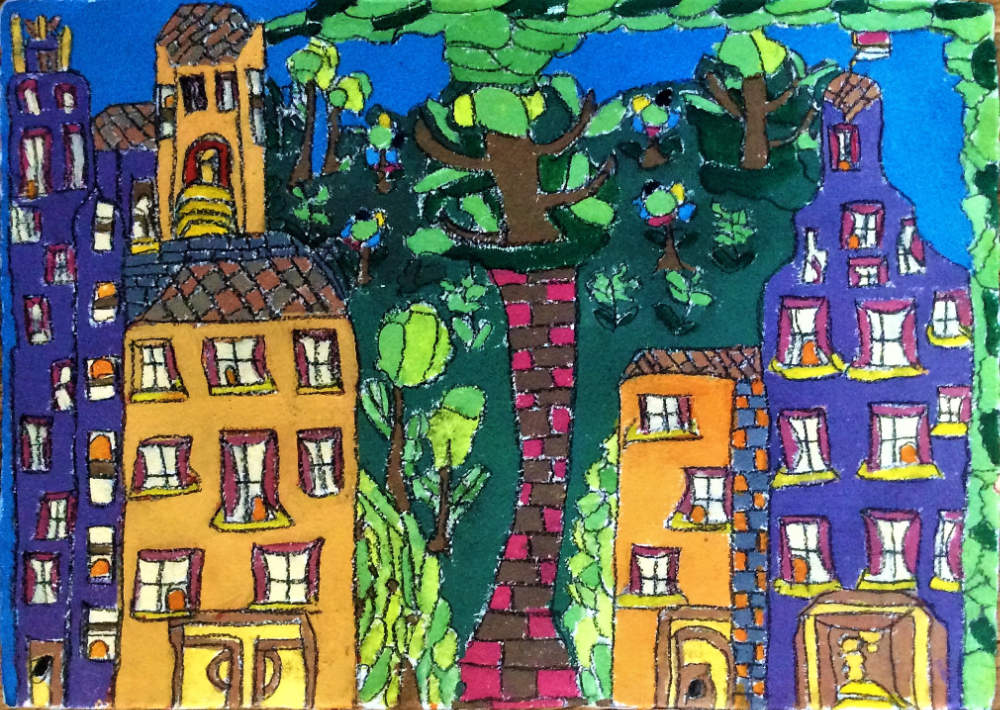


“My practice includes drawing, printmaking and sculpture. The work embraces a deliberately hand-made aesthetic, and draws on influences including fairy tales, reference books and museum exhibits.”
It is a huge honour for me to be included in the National Collection at Crawford Art Gallery. There is a cabinet upstairs in the gallery that contains fragments of a carved wooden human skeleton. It was made by John Hogan in the nineteenth century, and I can never visit the gallery without going to see this exhibit.
Looking at this sculpture, trying to understand how and why it was made has influenced so much of my work, especially these pieces acquired by the Crawford Art Gallery. It feels like a privilege that my own work will now be a part of the same collection, and will be accessible to many other people as they visit the gallery over the years to come.”
Originally from Carlisle, Northern England, Peter Nash is a multi-disciplinary artist based in Cork, Ireland. He obtained a BA Honours Degree in Fine Art (Sculpture) from Sheffield Hallam University, England in 2003 and graduated in 2016 with an MA in Art & Process from CIT Crawford College of Art and Design. Nash is a studio member of The Backwater Artists Group and Cork Printmakers. His work is widely exhibited throughout Ireland and the UK, and is held in private and public collections in Ireland, the UK and US.





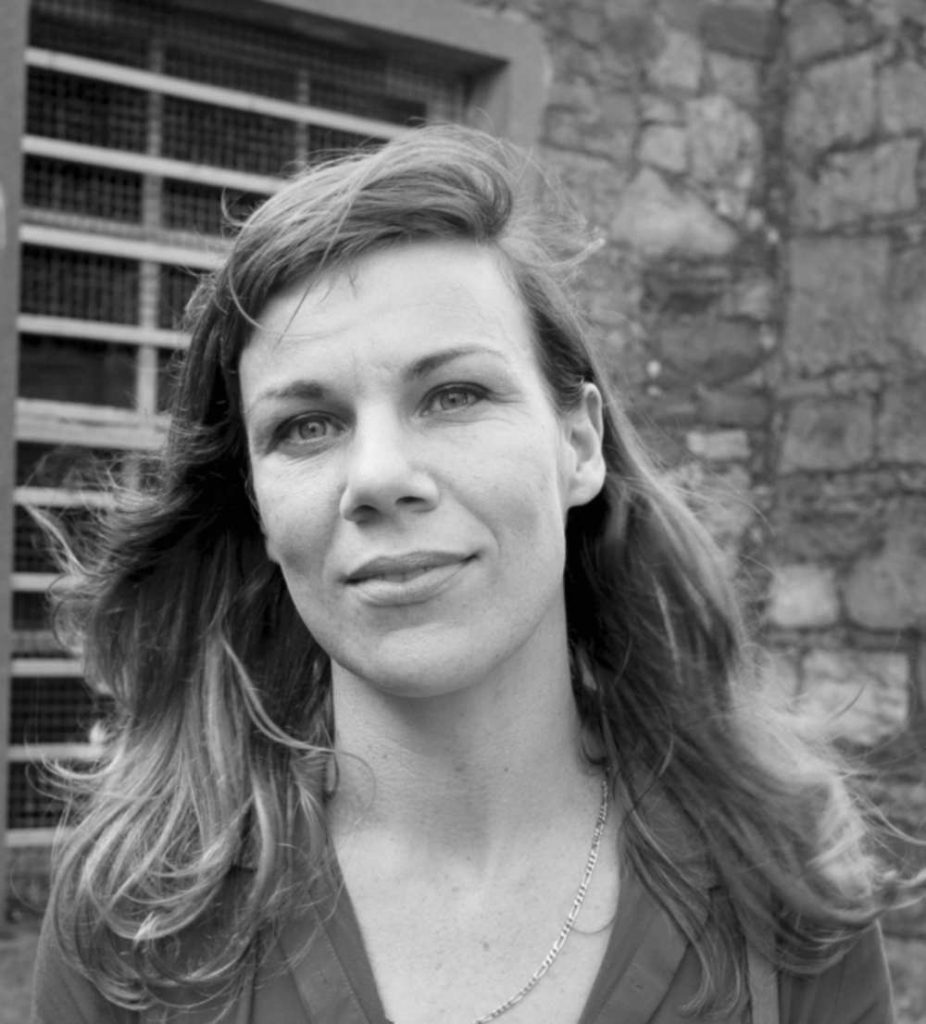
‘Inscriptions of an Immense Theatre’ by Ailbhe Ní Bhriain joins the National Collection at Crawford Art Gallery.
Ní Bhriain is an Irish artist known for her use of film, computer generated imagery and photography. The work has been exhibited widely both nationally and internationally and has increasingly involved collaboration with musicians and composers, with screenings and installations incorporating recorded sound, live performance and improvisation.
Ní Bhriain's immersive film is set in three distinct locations, each of which has been transformed into a site of dreamlike strangeness. The film begins from within the interior of the British Museum, slowly revealing the museum’s earliest collection; it moves next to the site of a temporary accommodation centre reminiscent of those used to house asylum seekers in Ireland, the camera gliding past exterior views of its anonymous units; it ends within an empty limestone quarry, tracking the quarry’s rock surfaces and factory interiors. Linking the three seemingly disconnected sites is an exploration of inscription, loss and imperial legacy.
The title of the work derives from the earliest known museological writing in the western world – Samuel Quiccheberg's Inscriptions or Titles of the Immense Theatre (1565), which details the practice of museums and the organisation of the world’s objects into classes and subclasses. This was essentially an instruction manual for the creation of private collections, with an explicit Western imperialist agenda.


Watch Ailbhe Ní Bhriain speak about her work joining the National Collection at Crawford Art Gallery in this video filmed earlier this year:
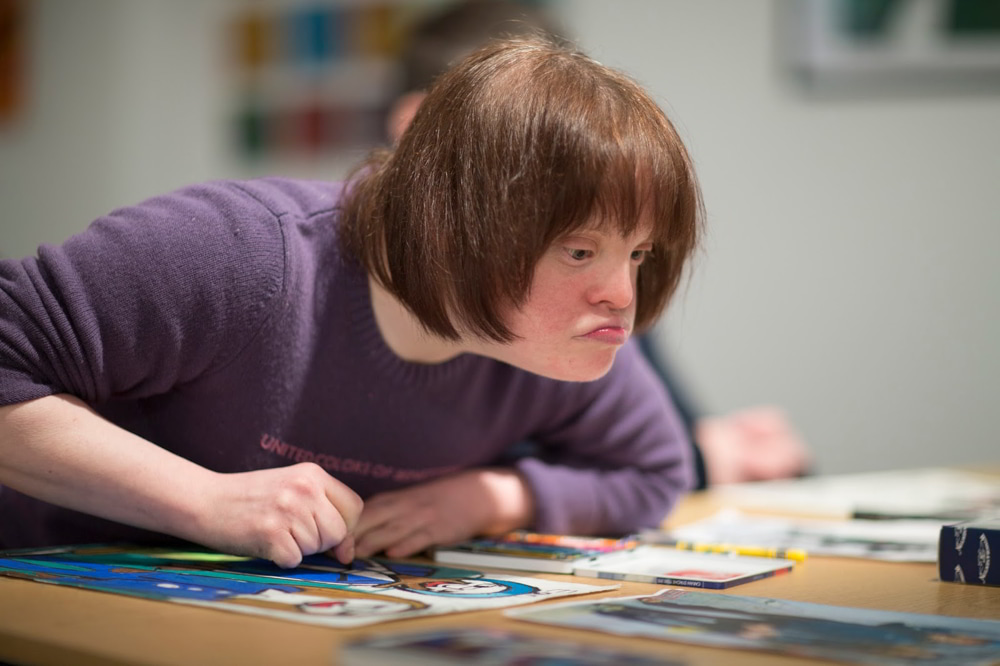
A toaster, a typewriter, a dustpan and brush…these are just some of the objects celebrated in Íde Ní Shúilleabháin's bold and fearless still life and object drawings, a number of which have been acquired for the National Collection.
Íde reimagines a variety of tools. Some of these are much-loved objects, for example, her friend Hermann’s vintage camera, while others were part of the furniture in the jumble of the workshop space,
Íde gives all of these ostensibly humble objects the same attention, using a confident line, strong colours and humour to bring them to life. She works quickly and with great concentration, often using oil pastels on paper.
Íde lives in Cork and is a member of Crawford Supported Studio. She was a long-term member of Glasheen Supported Studio Programme (GASP). Íde was recently awarded a training grant from Arts & Disability Ireland to develop her printmaking skills at Cork Printmakers.
Íde frequently and generously collaborates with the gallery’s Learn & Explore programme to present collaborative workshops and visits for diverse groups. She has collaborated with the gallery to present activities for National Drawing Day, Cork Lifelong Learning Festival, as well as exhibition- specific projects.
Her previous projects and exhibitions have included showing work at Flat Iron Gallery in Chelsea, New York, Paul Barwell Gallery of Contemporary Art, Medellín, Colombia, Crawford Art Gallery, Cork City Hall, Cork Public Museum in Fitzgerald’s Park, Cork Coffee Roasters, Quay Co-op, Cork, Bank of Ireland on Patrick Street Cork, Unhindered Exhibition - Kilkenny Arts Festival, MTU Crawford College of Art and Design, Sirius Arts Centre, Cobh, The Vision Centre, Cork, and The Irish Examiner (Newspaper) office, Cork.
![Image: Íde Ní Shúileabháin, Untitled [Toaster], oil pastel on paper. Courtesy of the Artist and Crawford Supported Studio.](https://crawfordartgallery.ie/wp-content/uploads/Ide-Ni-Shuileabhain.-Toaster.-oil-pastel-on-paper.-Courtesy-of-the-Artist-and-Crawford-Supported-Studios..jpg)
![Image: Íde Ní Shúileabháin. Untitled [No.11], neocolour on paper. Courtesy of the Artist and Crawford Supported Studio.](https://crawfordartgallery.ie/wp-content/uploads/Ide-Ni-Shuileabhain.-No-11.-Neocolour-on-paper-28cm-x-38cm-Courtesy-of-the-Artist-and-Crawford-Supported-Studios.jpg)
![Image: Íde Ní Shúileabháin. Untitled [Typewriter], neocolour on paper. Courtesy of the Artist and Crawford Supported Studio.](https://crawfordartgallery.ie/wp-content/uploads/Ide-Ni-Shuileabhain.-Untitltled-typewriter-oil-pastel-on-paper.-A3-Euro-220.jpg)
![Image: Íde Ní Shúileabháin, Untitled [ No 12], neocolour on paper. Courtesy of the Artist and Crawford Supported Studio.](https://crawfordartgallery.ie/wp-content/uploads/Ide-Ni-Shuileabhain.-No-12.-Neocolour-on-paper-28cm-x-38cm-Euro-220.jpg)

“It’s a celebration of the beauty of imperfection and the resilience of living forms.”
Cork-born artist Nuala O’Donovan’s intricate ceramic sculptures have join National Collection. They are inspired by nature and in particular, the irregularities that manifest themselves in everything from shells to flowers. She works mainly in porcelain clay, each element of the structural patterns that the piece is made by hand and the forms are constructed over long periods of time. She makes work in series and each piece is unique.
O’Donovan’s work seeks to capture the dynamism of living forms. She uses drawings and photographs to identify the simple patterns that form the basis of complex structures in nature and use these patterns to build her works. The forms of the pieces are based on geometry in nature particularly fractal geometry. She is interested in the narratives recorded by irregularities in pattern, often evidence of the ability of living forms to overcome adversity.
“My work has been acquired for inclusion in the National Collection at the Crawford Gallery in Cork. I feel deeply honoured, beyond words, that my work was one of the selected artworks for the collection. Cork is the city that I grew up in and I have visited the Crawford Gallery of Art many times, I went there for art classes as a child. I am so delighted that a piece of my work will have a permanent place in its collection - I hope that my work communicates joy to its new audience.”
O’Donovan is a former architectural technician who worked in the US before returning to Cork in 1997, where she studied ceramics at the Crawford College of Art and Design, graduating with an MA in 2008. She completed a BA degree in three- dimensional design at Middlesex University in the UK.
O’Donovan’s work appeared in the exhibition Earth, Wind & Fire: Made in Cork Contemporary at Crawford Art Gallery in 2018-19.


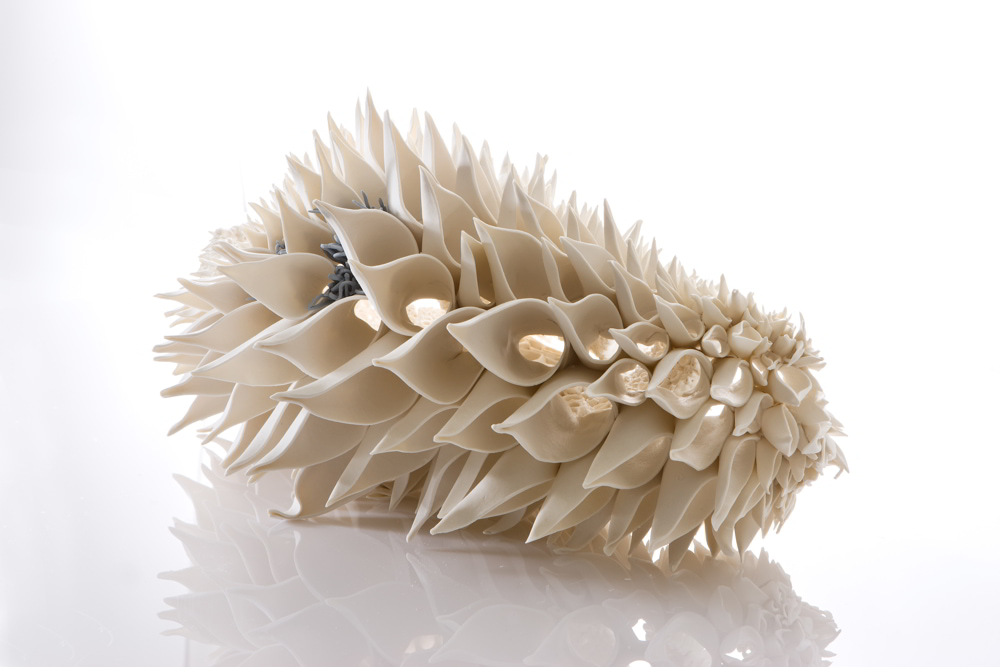

A number of chromogenic prints by artist Sarah O’Flaherty have joined the National Collection. Here, the artist shares insights into how the work came to be made:
“I live and work in rural Co. Cork where I have my studio. My ideas are processed, in the main, through objects or sculptures but over the last few years 2D image making has become an increasingly important element of the work.
These images in particular were made in relationship to a series of objects that were teasing out ideas around temporality, around the idea of how new things can come into being through the demise of another thing…
In this instance the site was an abandoned polytunnel. I visited it over a number of years and through the seasons and was witness to the wild growth of briar, nettle and fern. All doing battle to survive in this once ordered space. I was drawn to the sheer heave of life, the sweat, spittle, faeces and breath of plant, organisms and insects. Like looking into a “mirror”!
To be part of the National Collection at the Crawford Gallery of Art is a great, great honour. It means a lot to have “another’ take notice of the work and value it, especially when it is a national art institution. It also means that the works are available for all to see. I treasure my visits to our national collections, you never know what you may encounter.”
Sarah O’Flaherty studied at the MTU Crawford College of Art & Design (formerly CIT Crawford College of Art & Design) in Cork, the LIT Limerick School of Art & Design and the Royal College of Art, London.
Recent group shows include ‘Encountering the Landscape’, VISUAL, Carlow (2018); ‘Visions of Half-light’, Town Hall Gallery, Macroom (2018); ‘Here and Now’, Town Hall Gallery, Macroom (2016). In 2012, she was awarded the Royal Hibernian Academy Conor Fallon Sculpture Award. She teaches at the LIT Limerick School of Art & Design.



Tom O’Sullivan is a painter and a member of Crawford Supported Studio. He was also a long-term member of the Glasheen Artist Studio Project (GASP).
He works most frequently with acrylic paint on card or board. He works intuitively, re-working the painted surface until he is happy with the result. His paintings often evoke landscapes and the natural world.
Tom was recently awarded a mentoring grant by Arts & Disability Ireland, allowing him to work collaboratively with the artist Tom Climent, whose work has also joined the National Collection recently.
Tom's previous projects and exhibitions have included showing work at HAI New York, Flat Iron Gallery, New York, Unhindered at the Links Gallery, County Hall Killkenny, Paul Barwell Gallery of Contemporary Art, Medellín, Colombia, Crawford Art Gallery, Cork City Hall, Cork Public Museum in Fitzgerald’s Park, Script Cafe at Triskel Arts Centre, Millennium Hall, Cork, Quay Co-op, Cork, MTU Crawford College of Art and Design, Sirius Arts Centre, Cobh, The Vision Centre, Cork, and The Irish Examiner (Newspaper) office, Cork.

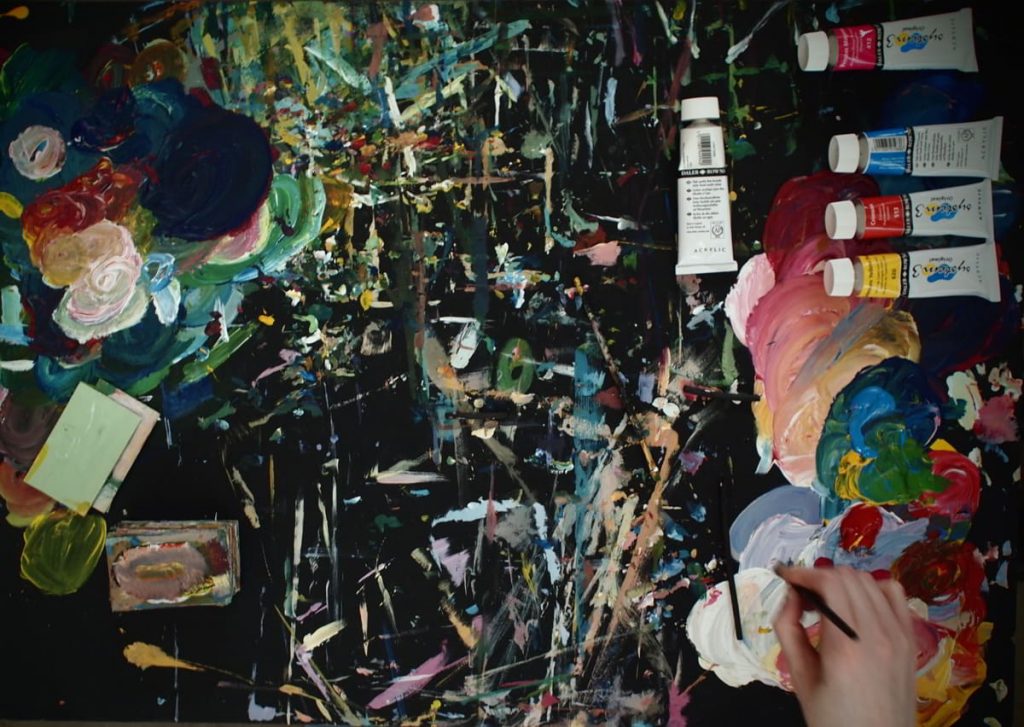
![Image: Tom O’Sullivan, Untitled [Series of 6], acrylic and charcoal on board. Courtesy of the Artist and Crawford Supported Studio.](https://crawfordartgallery.ie/wp-content/uploads/Tom-OSullivan-acrylic-and-charcoal-on-board-series-of-6-Courtesy-of-the-Artist-and-Crawford-Supported-Studios-1024x719.jpg)
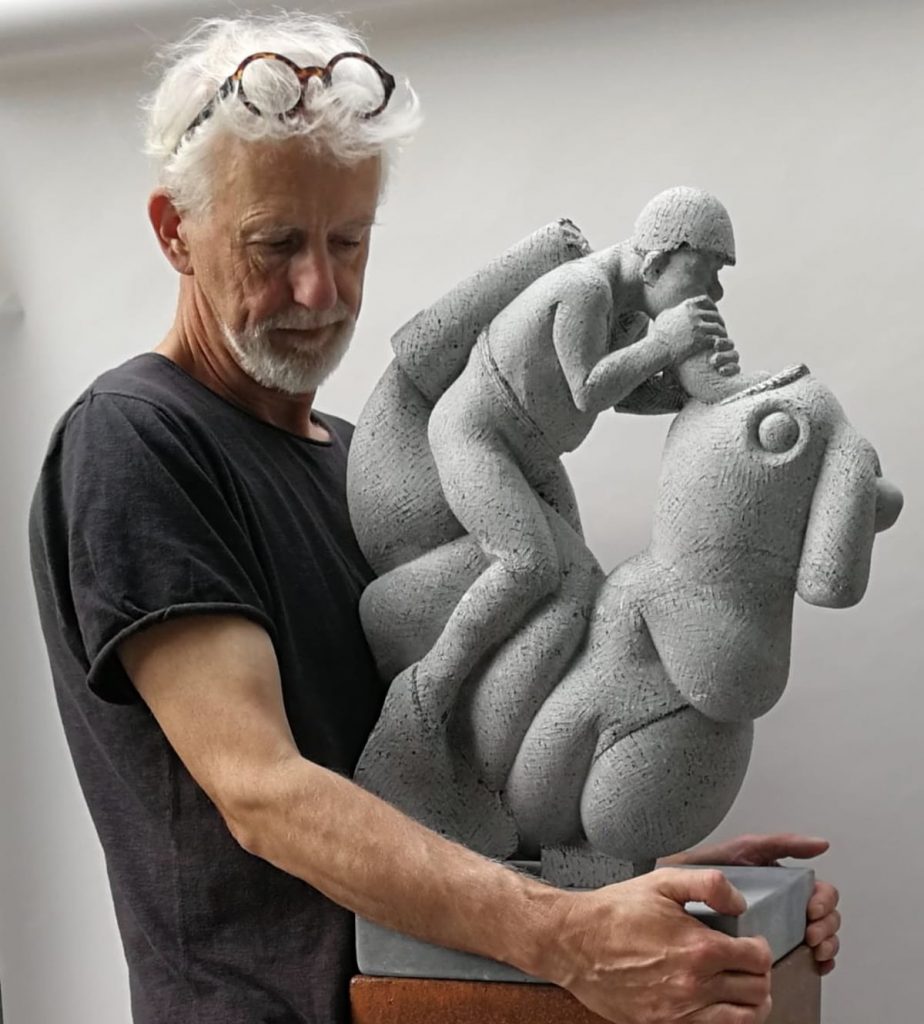
‘Strange Beasts’, a work in limestone by Cork-based sculptor Michael Quane, is now a part of the National Collection and can currently be seen in the exhibition MENAGERIE: ANIMALS BY ARTISTS.
Quane shared some of his thoughts on becoming part of this collection, partially housed here at the gallery, and a little bit about how this work came to be created with us:
“I’ve been practicing as an artist for more than 30 years. Since meaning is, I’m certain, a stock in trade for an artist, ‘what does it mean’?, as a question, in relation to my work being included in the National Collection, demands some consideration.
I was recently out walking in the woods nearby my home and happened upon a gnarled, although youthful, Silver Birch. It was beautiful too. A brief conversation we had, my partner and I, and we gave it a name: The ‘Bonsai Birch’.
Before we named it, for us, it simply ‘was’. Who else in this wilderness ever noticed it or named it? If anyone at all, I don’t know. A young tree, remember. Later I remarked to myself, when remembering the name to myself, how it was that the tree in my memory rendered itself so vividly. It was as if the name itself was a force of life: giving a vital brilliance to my recall.
As humans, we name things when we notice them, to acknowledge them and in some way, almost of magic, give them life in the ever-morphing maps we make with meaning: in doing so we name the Wilderness.
My artwork feels ‘named’ now and has a place in-amongst all the other things named from the Wilderness. That’s what it means for me to have my work in the National Collection and my gratitude for this to Crawford Art Gallery, for, so to speak, taking a walk in the woods.
The sculpture ‘Strange Beasts’ is the work in limestone that has been chosen for the National Collection by the Crawford Gallery.
To tell the simple story of the making of this sculpture, it was begun, roughed-out in the few days leading to the official announcement by the WHO that what was unfolding all about us was a global pandemic. That was 12 March 2020. An abstract strangeness descended upon every aspect of my life and I acquiesced. In regard to the ‘Strange Beasts’, I allowed it to take me to its eventual conclusion, by surrendering myself faithfully to the possibilities that would unfold from the fabric of its 360-million-year-old material: the limestone. Until I did so, the nature of the block in front of me appeared to have little potential. I started to investigate and track the flaws through the block by following them with the chisel. These seams or faults were so because they were composed of an ash-like substance which was, I’m guessing, the result of Devonian volcanic ash outflows. By following these seams, I formed the basic shapes from which the subjects would emerge (in this case the duo of ‘Strange Beasts’) and ensured that by removing these seams I wouldn’t run into trouble with them later in the process.”
Michael Quane was born in 1962 and lives in Coachford, Co.Cork. The world he found himself in, as an eager spectator, was displayed to him on an early black and white TV. The screen showed him Vietnam, civil rights marches, Northern Ireland, a man walking on the Moon, the theatre of the Cold War, Chopper bikes, flared jeans and many Apollos inspiring him to want to be an astronaut—for a while anyway. He has exhibited throughout Ireland, UK, Western Europe, and the US. His work is present in private and public collections throughout. He is a member of Aosdána and was elected a full Member of the RHA in 2004. The fusion of science and art is a central element in Quane’s work.



Belfast-based artist Jennifer Trouton RUA’s ‘Mater Natura: The Abortionist’s Garden’, has joined the National Collection at Crawford Art Gallery.
Trouton spoke with us about this work earlier this year:
“‘Mater Natura: The Abortionist’s Garden’ forms part of a larger body of work entitled ‘One of Many’: an exhibition which considers the women affected by societal and religious attempts to suppress reproductive rights in Ireland.
Itis an ongoing watercolour series which was conceived during a residency at Xi’an Jiaotong-Liverpool University in China. Each watercolour features a botanical illustration of an abortifacient or emmenagogue plant used by women to control their own reproductive destinies. Closer inspection of each piece reveals that the plants are growing up, and through, subtle representations of the female anatomy and the maps of Ireland. The series will ultimately comprise of thirty-two watercolours, symbolising the twirty-two counties of Ireland.
In March 2020, as a result of the lockdown, I had no access to my studio and I turned to the traditionally female craft of embroidery. Throughout the following months of enforced domesticity and heightened anxiety, I stitched quietly in the evenings and created an embroidered version of each watercolour. In doing so, I joined a growing number of artists engaged in turning this historically domestic art form into a contemporary political expression.
As history has demonstrated, the silencing of women, through the shaming and isolation of their actions and experiences, has been at the forefront of controlling women’s bodies and their lives. Only through ongoing and open public debate will women be able to take, and maintain, control of their futures. Whilst Mater Natura will always hang silently, I am both overjoyed and humbled to know that due to the work’s purchase by the Crawford Gallery, and by its inclusion in the National Collection, the work will forever be part of our Nation’s public conversation on this issue.
I would like to express my thanks to the Crawford Gallery for allowing my female voice to be heard and for choosing to include the subject of abortion in our Nation’s visual record. As an artist, and as one of the many, I will always be grateful for your decision.”
Jennifer Trouton work subtly express ideas around gender, class and identity within Irish history; combining an interest in the mythological and historical with personal narrative.
Since graduating from the University of Ulster in the mid-nineties Trouton’s work has been extensively exhibited both nationally and internationally. Throughout her career Trouton’s work has garnered numerous awards, including the Golden Fleece Award, the Clare Morris Open Exhibition, Adjudicators’ Award, the RHA Annual Exhibition, Keating/McLaughlin award, the RUA Tyrone Guthrie Residency Award and in 2020 the RUA Watercolour prize. In 2007, Trouton was a finalist for the AIB Artist of Promise Award. She has also been awarded residencies in New York, Los Angeles, China, Canada and Ireland.
Trouton’s work is held in numerous public and private collections, including the Arts Council of Northern Ireland, Office of Public Works, ESB Ireland, Queens University
Belfast, the University of Ulster, Belfast HSC Trust, Allianz Insurance, XL Insurance, the Northern Ireland Department of Finance and the David Roberts Foundation in London.

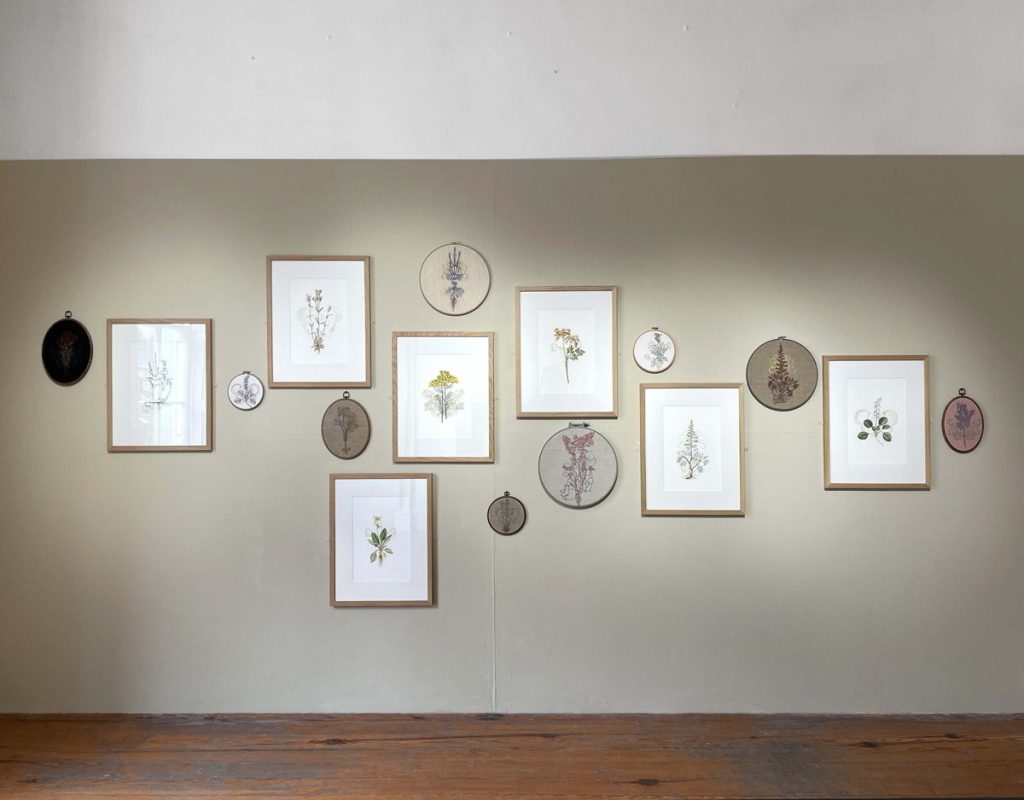

Charles Tyrrell is a Meath-born, Cork-based painter and printmaker. Two of his works, ‘Y12.19’ and ‘Y16.19’ have joined the National Collection at Crawford Art Gallery this year.
Tyrrell was kind enough to speak about his practice and work earlier this year, elaborating on the distinctive grid forms that appear in his work:
“The grid has always woven its way in some form or other through my work over the years, mainly having an underpinning role rather than being centre stage. In these works from 2019 the grid takes a more forward role. Having started with Indian ink drawings where an organic approach to building grids was developed, these notions were brought forward and worked further, using extruded impasto acrylic line work on Yupo paper which is mounted on birch plywood panels. These grid systems are combined with panels of low textured colour fields creating dynamic interactions.
The grids are far from mechanical and uniform, having grown from a system whereby random pockets of mini grids are established and from there I proceed to draw all these together into a fuller grid network. In doing so, distortions occur in order to maintain the grid’s integrity. These images have resonances in many aspects of the human experience. They speak to the idea of compromise and accommodation. They could be seen as visual representations of what it takes to achieve strong cohesive societal organisation. Mapping the distortions and the stretching needed to achieve this – a naturally evolved order.
My work has always been concerned with abstraction. Originally my painting would have directly connected with Abstract Expressionism but over the years my work has steered its course through a more programmatic minimalism while leaving room for the intuitive, allowing the paintings to carry many resonances. It is hard not to feel a connection with the power of nature as experienced in the particular exposed, rocky and rugged landscape of the Beara Peninsula.”
Tyrrell originally comes from Trim Co. Meath. He studied painting at the National College of Art and Design, Dublin. After graduating in 1974 he continued living and working in Dublin until 1984 when he moved with his family to Allihies on the Beara Peninsula in West Cork
He has exhibited extensively in Ireland as well as exhibitions in Britain, France, Austria and Germany. He has represented Ireland on a number of occasions, notably the Paris Biennale and the International Festival of Painting at Cagnes-sur-Mere in France.
Tyrrell is a member of Aosdána, an affiliation of creative artists, established by the Arts Council of Ireland to honour those artists whose work has made an outstanding contribution to the arts in Ireland.
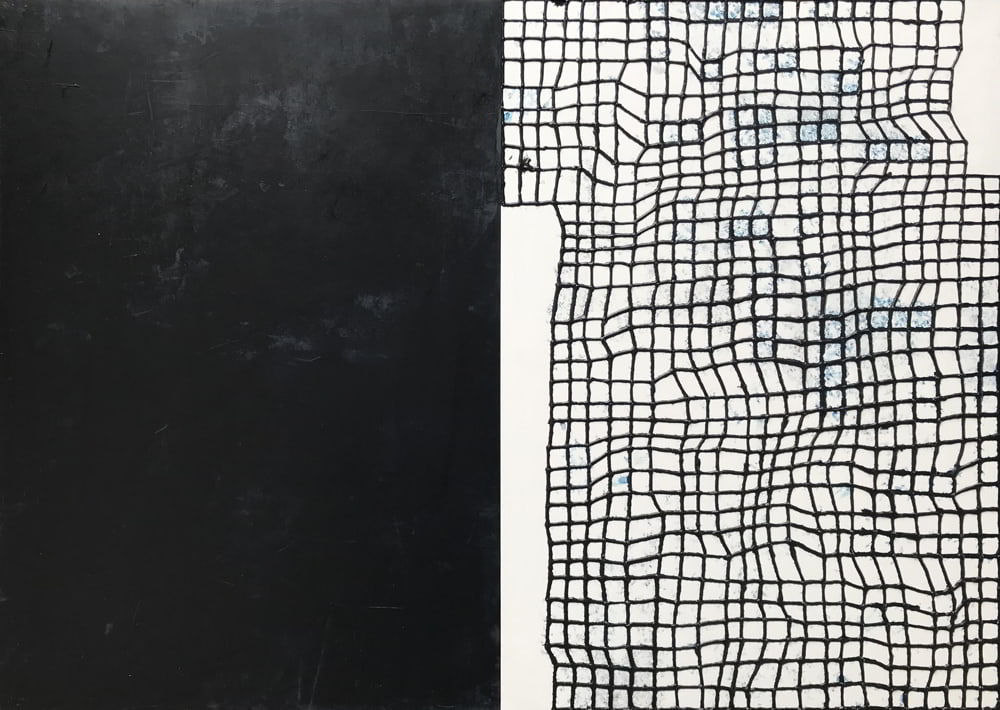


Daphne Wright is an Irish artist who has spent a large part of her career in the UK but now lives in Dublin.
Her work ‘Song of Songs’, a digital video, joins the National Collection at Crawford Art Gallery this year. Visitors to the gallery in the winter of 2019/20 may remember Wright’s solo exhibition at the gallery entitled A quiet mutiny. Wright’s work quietly addresses the human condition and the important stages of life we all pass through, that are at once poignant and mundane.
Wright spoke about her work and methods in approaching her work earlier this year:
“I make multi-narrative sculptural installations, which use a variety of techniques and often unstable or fragile materials including photography, plaster, tinfoil, unfired clay, sound, voice and video. I am curious about the way in which a range of languages and materials can create an involvement with often unspoken human preoccupations. At the core of my practice, I am concerned with boundaries and exploring the transitory areas of life, the cusp of childhood and adulthood, as well as the borderline between life and death. Animals and plants, with their shorter life cycles, often stand in for humans in my work. My visual vocabulary is inspired by suburban life, politics, literature, film, theatre and art history. My work often develops from observing my children, as well as older people, negotiating difficult issues that are often side-lined by our society – such as care, parenthood, family and ageing.
‘Song of Songs’investigates the relationships between adults and their more vulnerable family members. A man holds the hands of an elderly woman in a pose taken from a lovers’ death scene in opera. The power struggle between the actors is palpable as they sing a kind of elemental duet exploring love, jealousy and death. The woman chews and creates dissonant sounds not familiar coming from an older person – all the time, the male figure aids and accepts her noises and movements.
I wish to acknowledge and thank Pameli Benham (actor), Alan Coveney (actor) and Mino de Francesca (video production).
It is a great honour to be included in the National Collection at Crawford Art Gallery. My solo exhibition A quiet mutiny in 2019 was an important opportunity for me to show a group works I had been working on for six years and the team at the Crawford were fantastic to work with!”

Watch Daphne Wright in Conversation with Ellen Mara De Wachter speaking about 'Song of Songs':
Courtesy of Frith Street Gallery, London.

Emmett Place, Cork, Ireland
T12 TNE6
Tel: 021 480 5042
info@crawfordartgallery.ie
Opening Hours
N.B. Last entry is 15 minutes before closing
Monday–Saturday 10.00am–5.00pm*
Thursday until 8.00pm
Sundays and Bank Holidays
11.00 am–4.00pm
© 2024 www.crawfordartgallery.ie